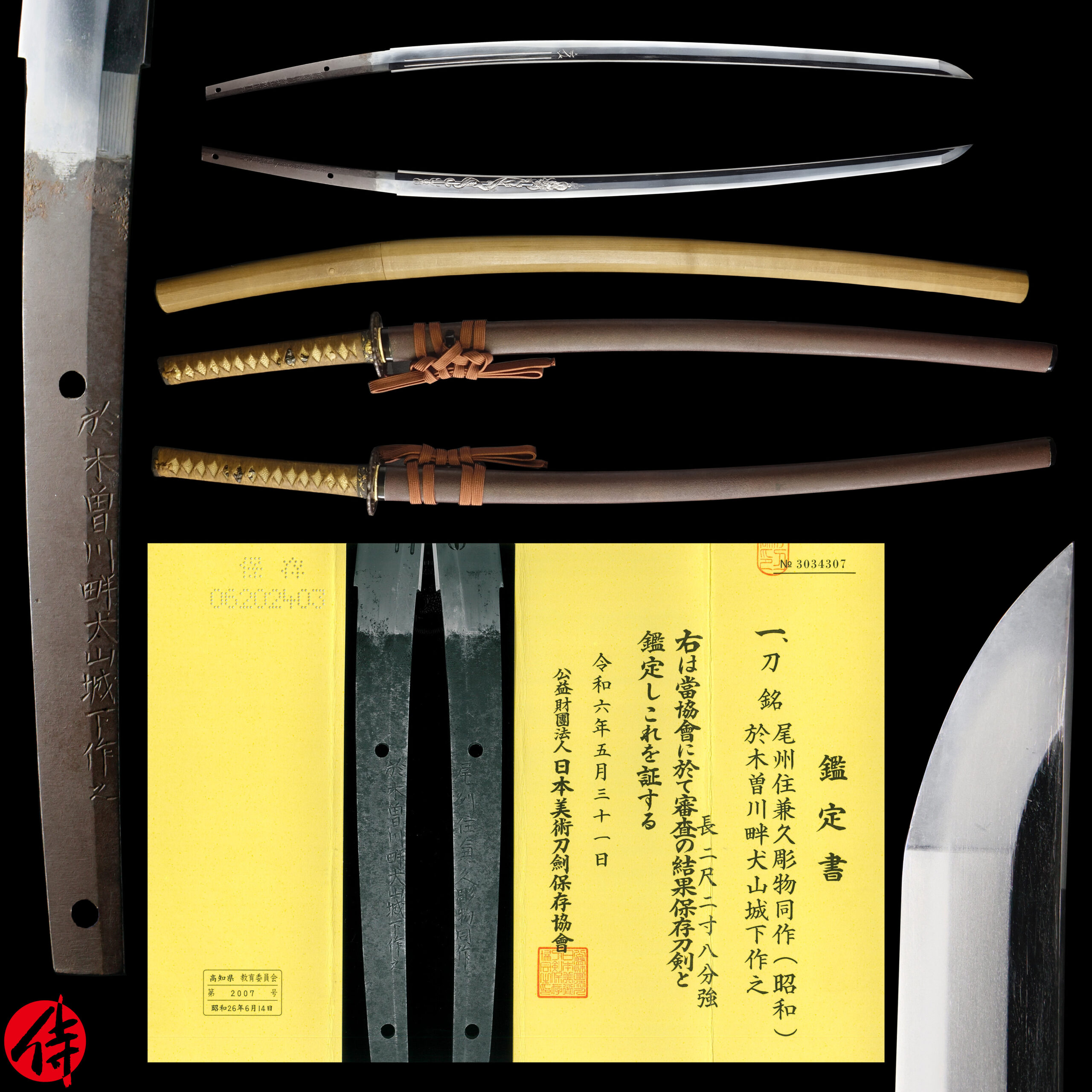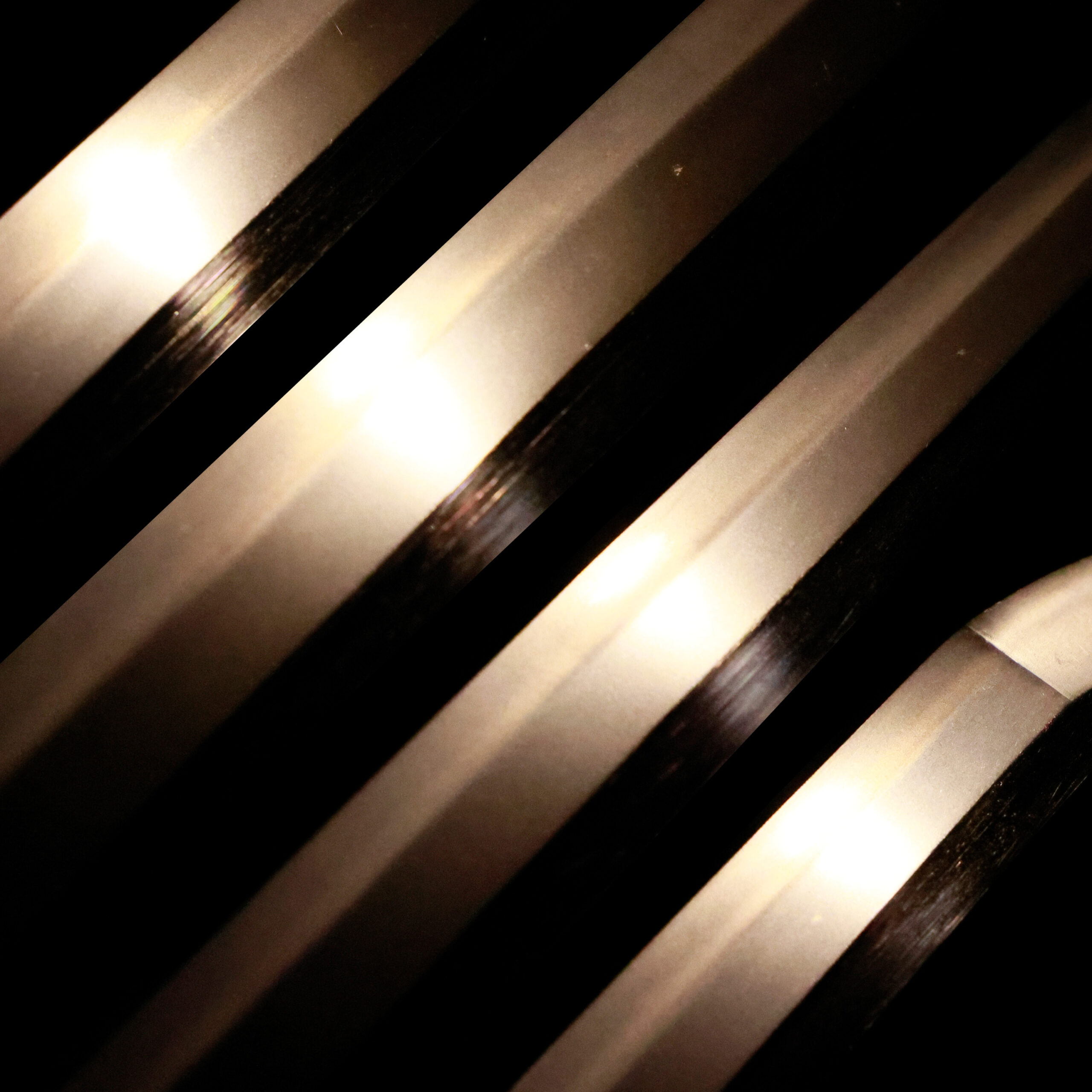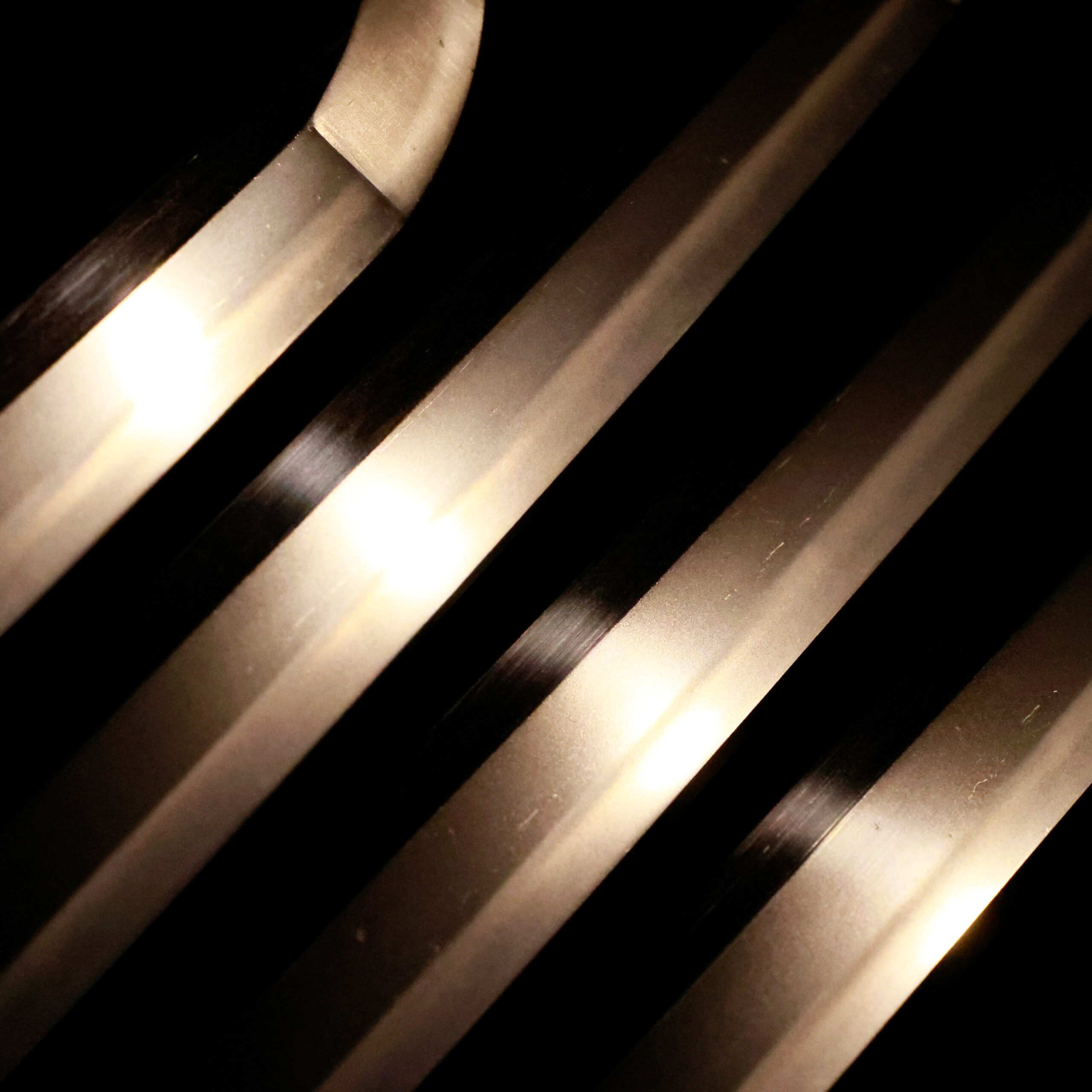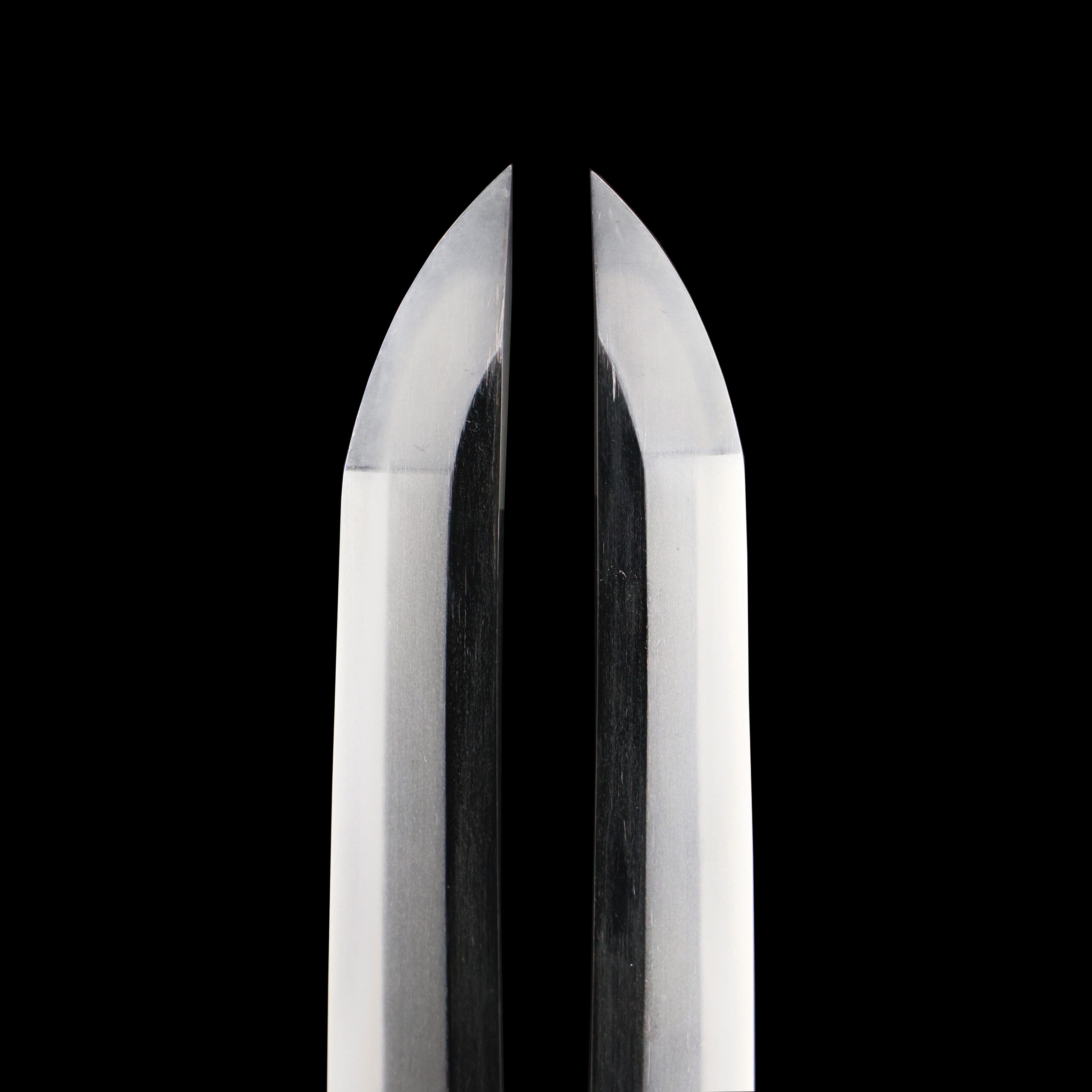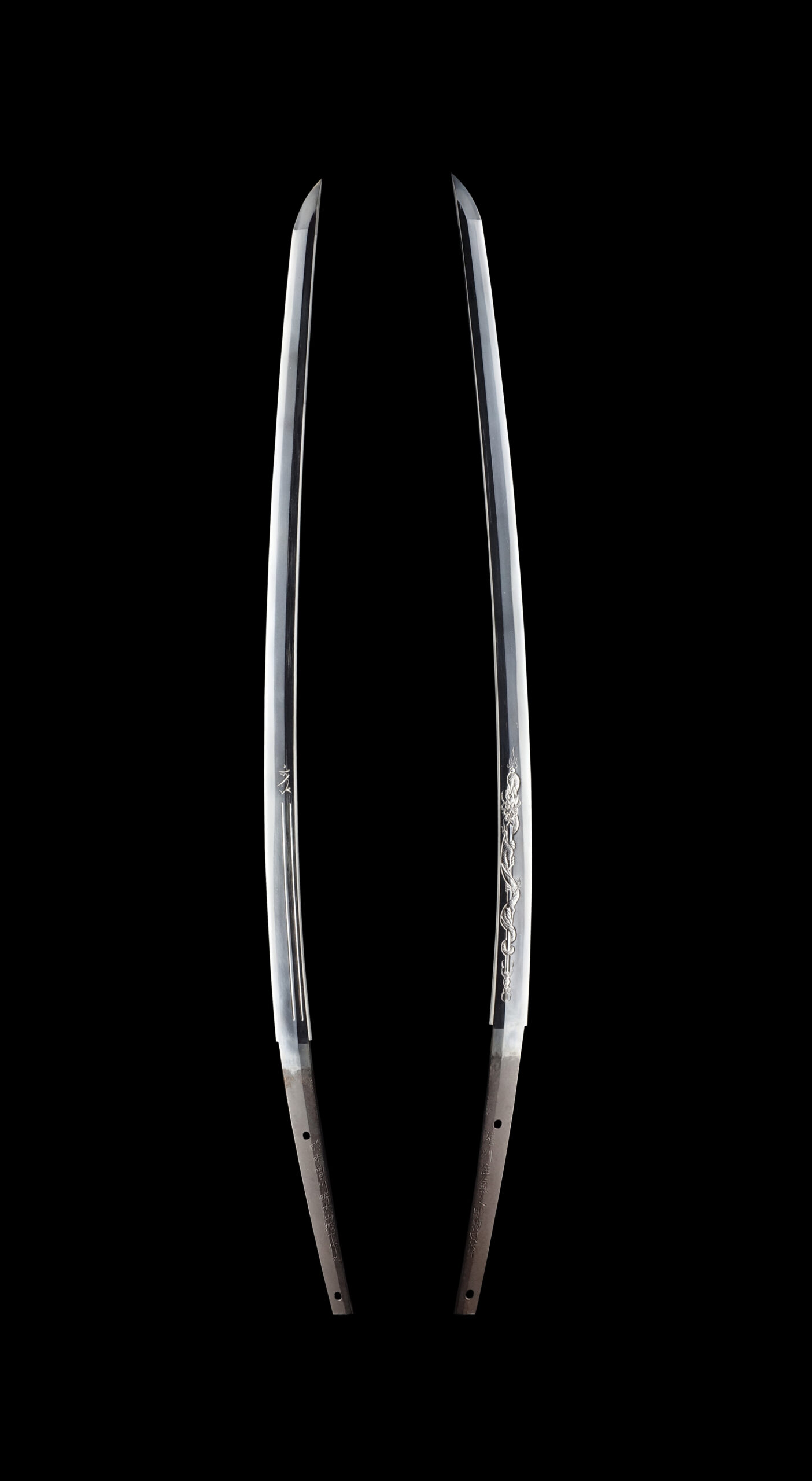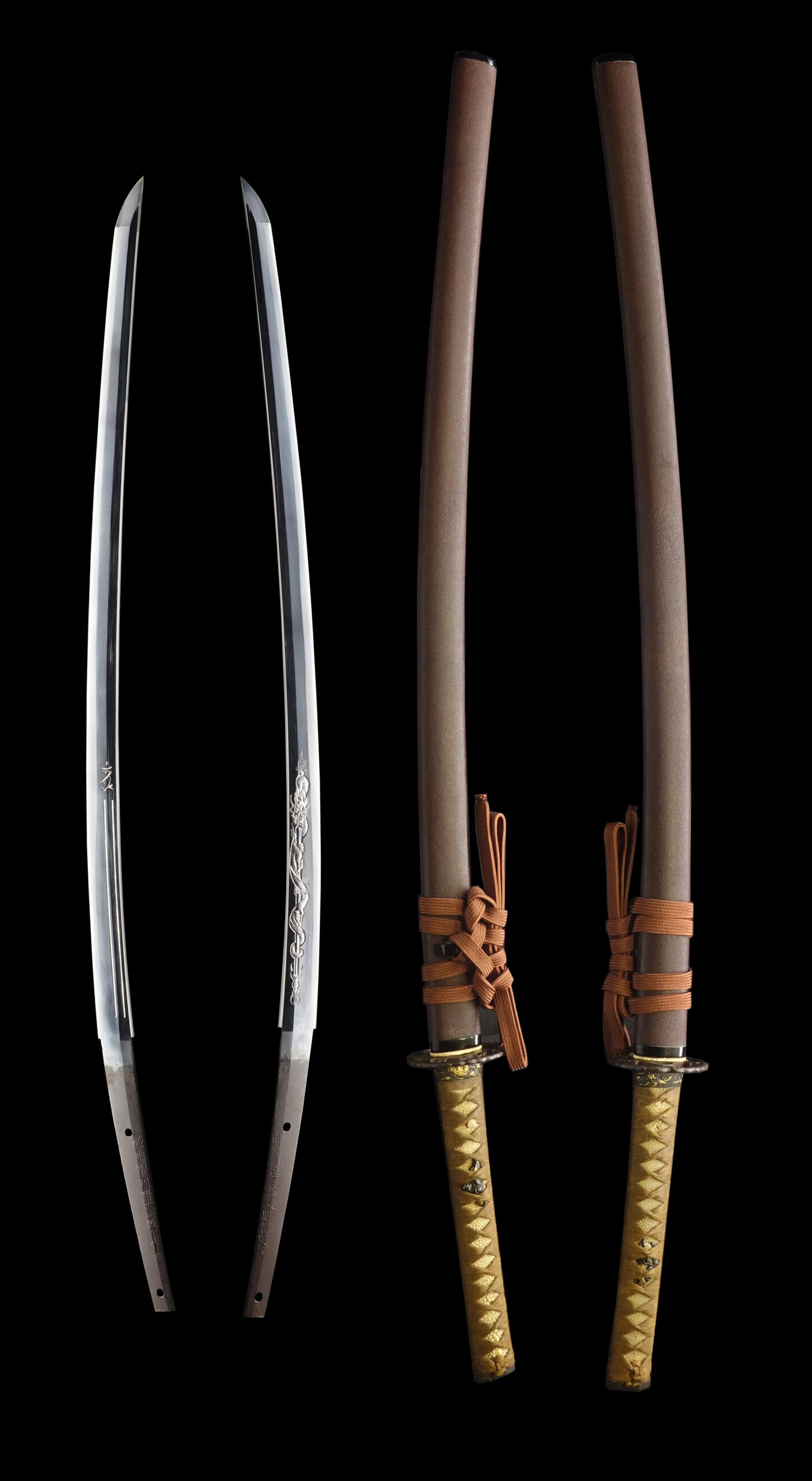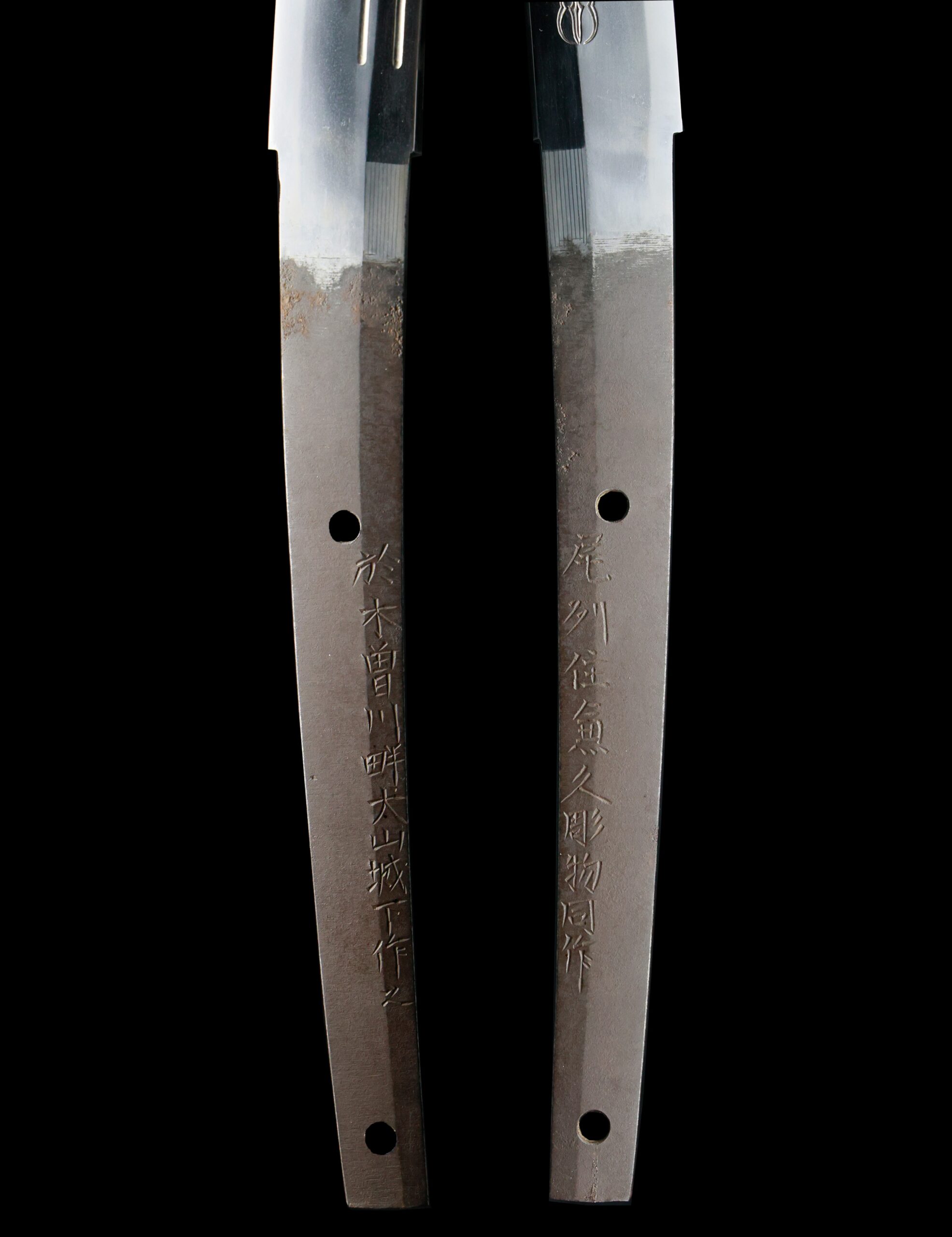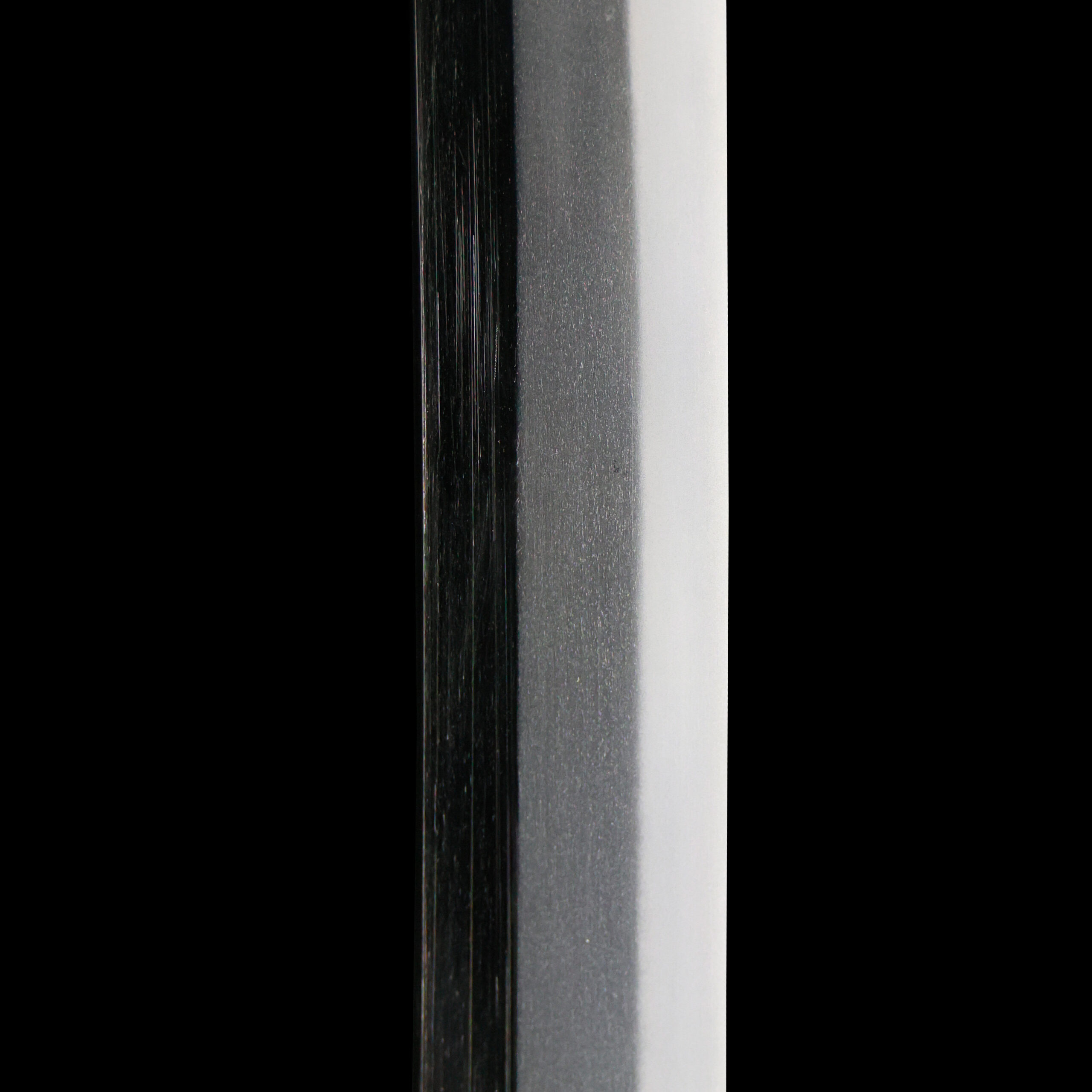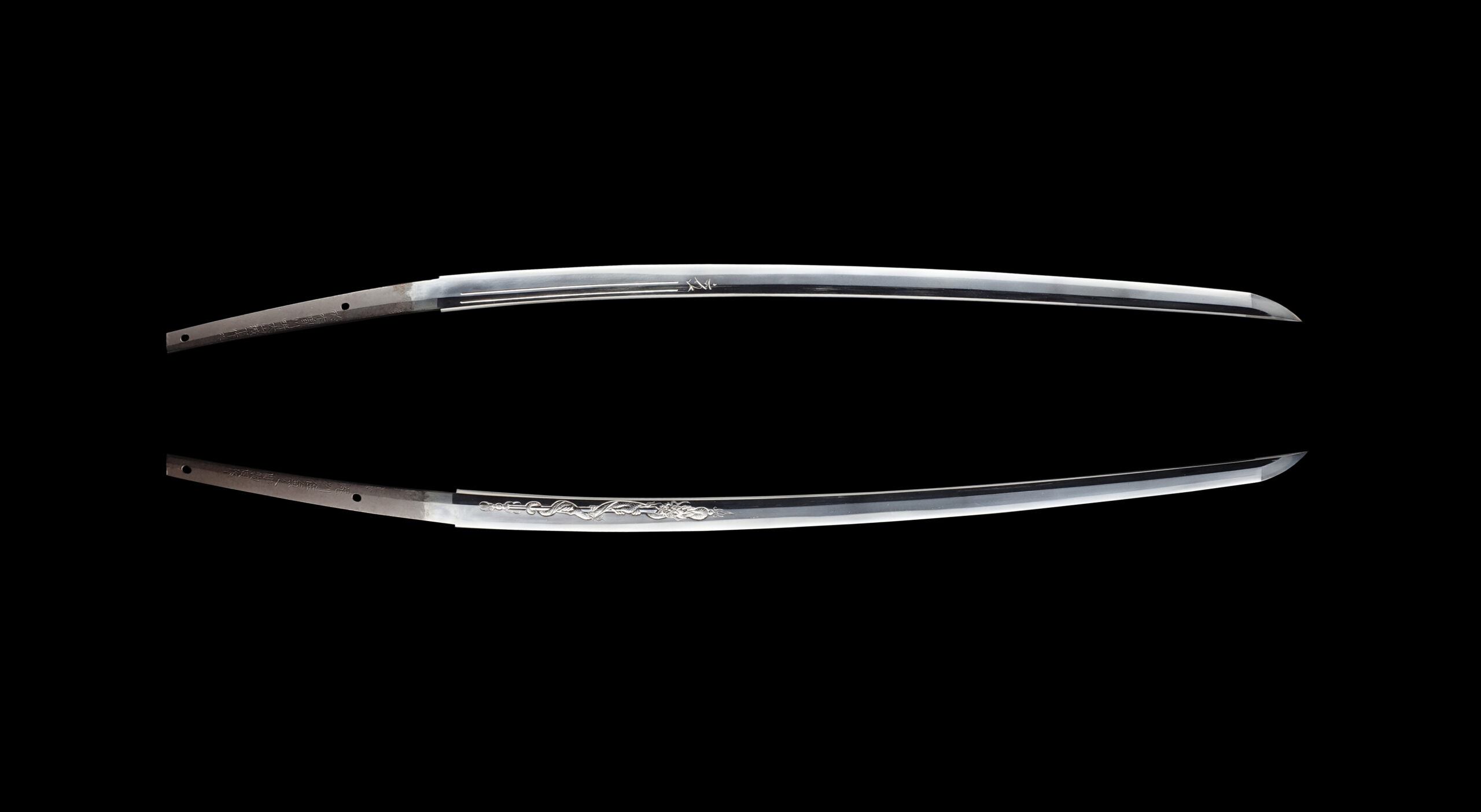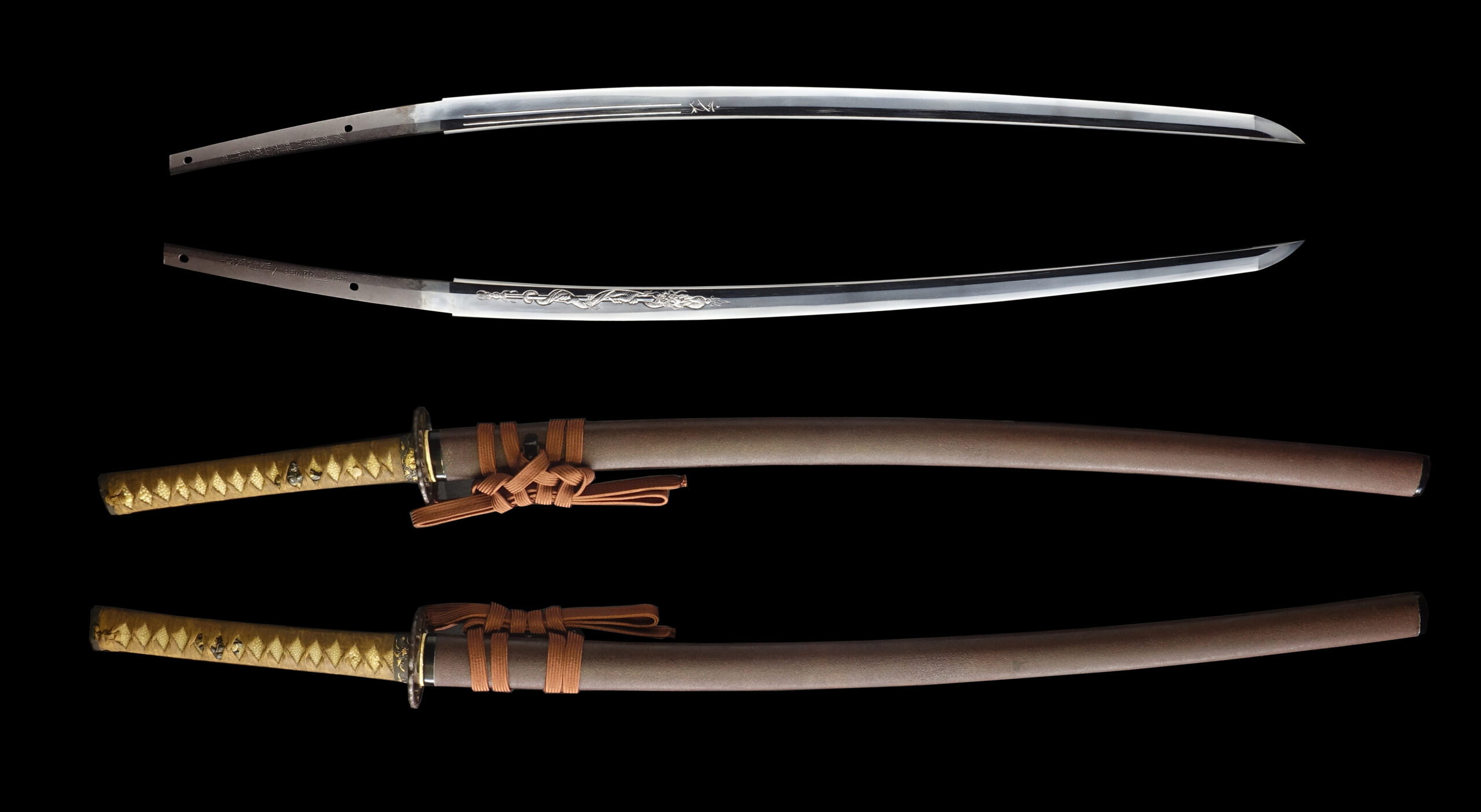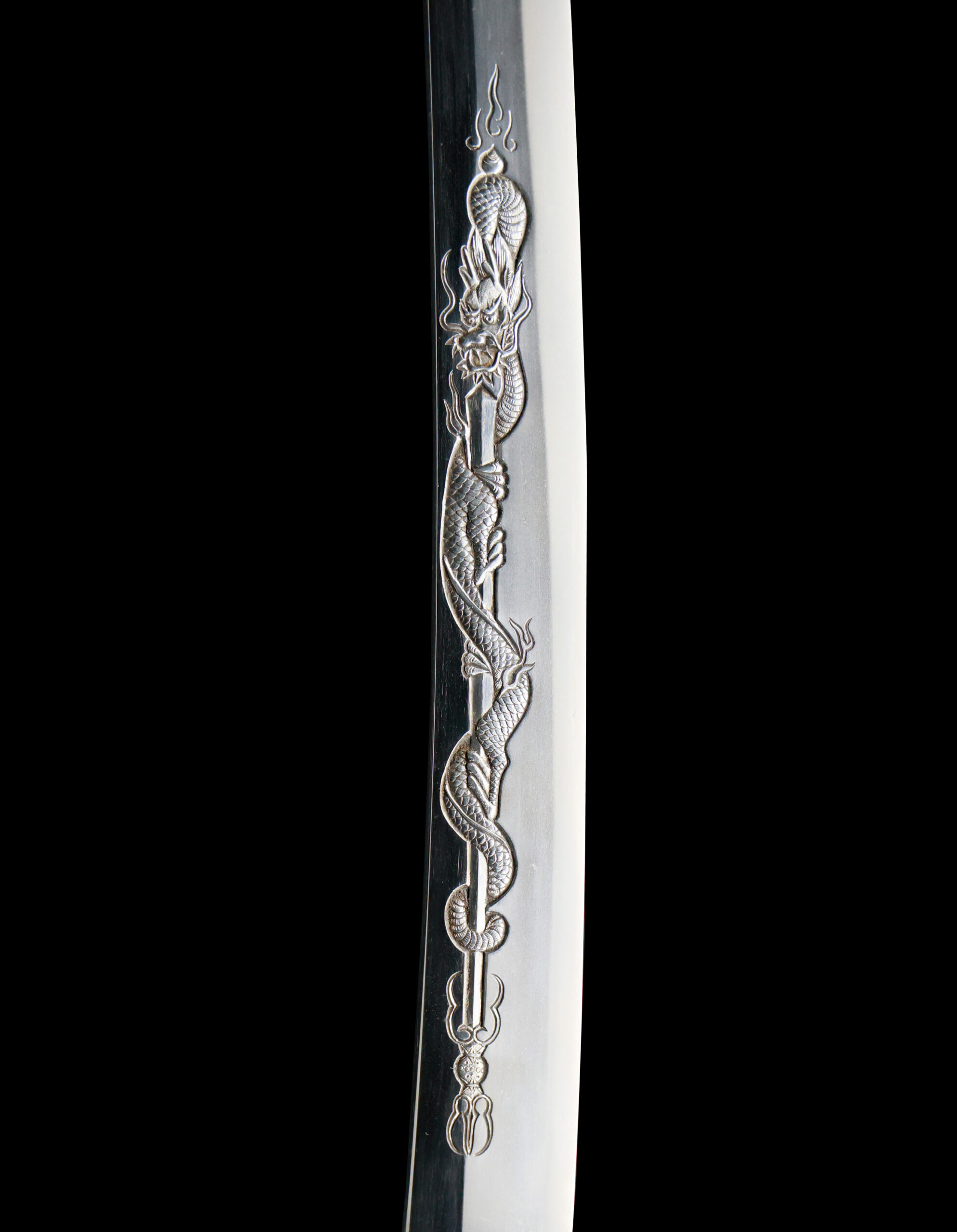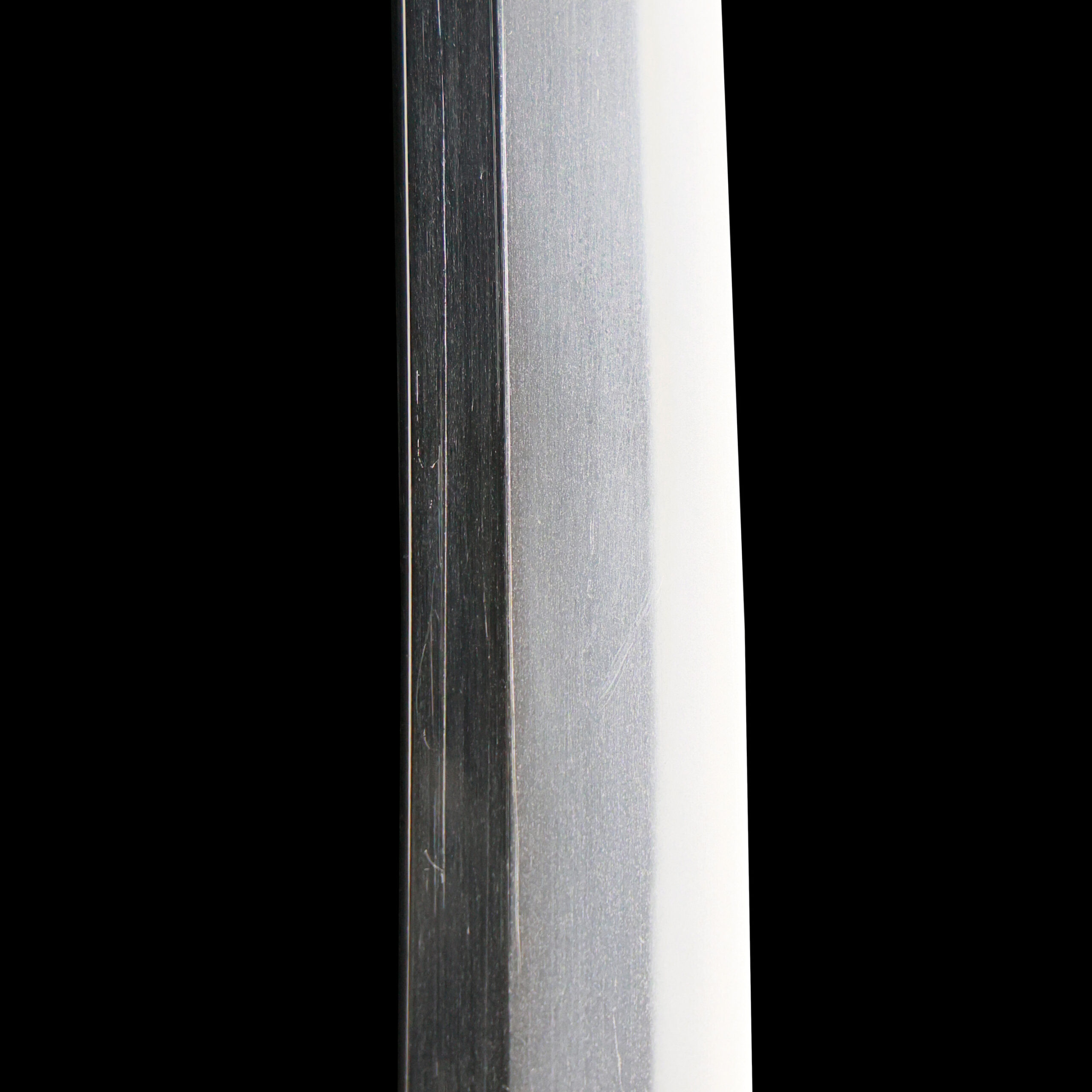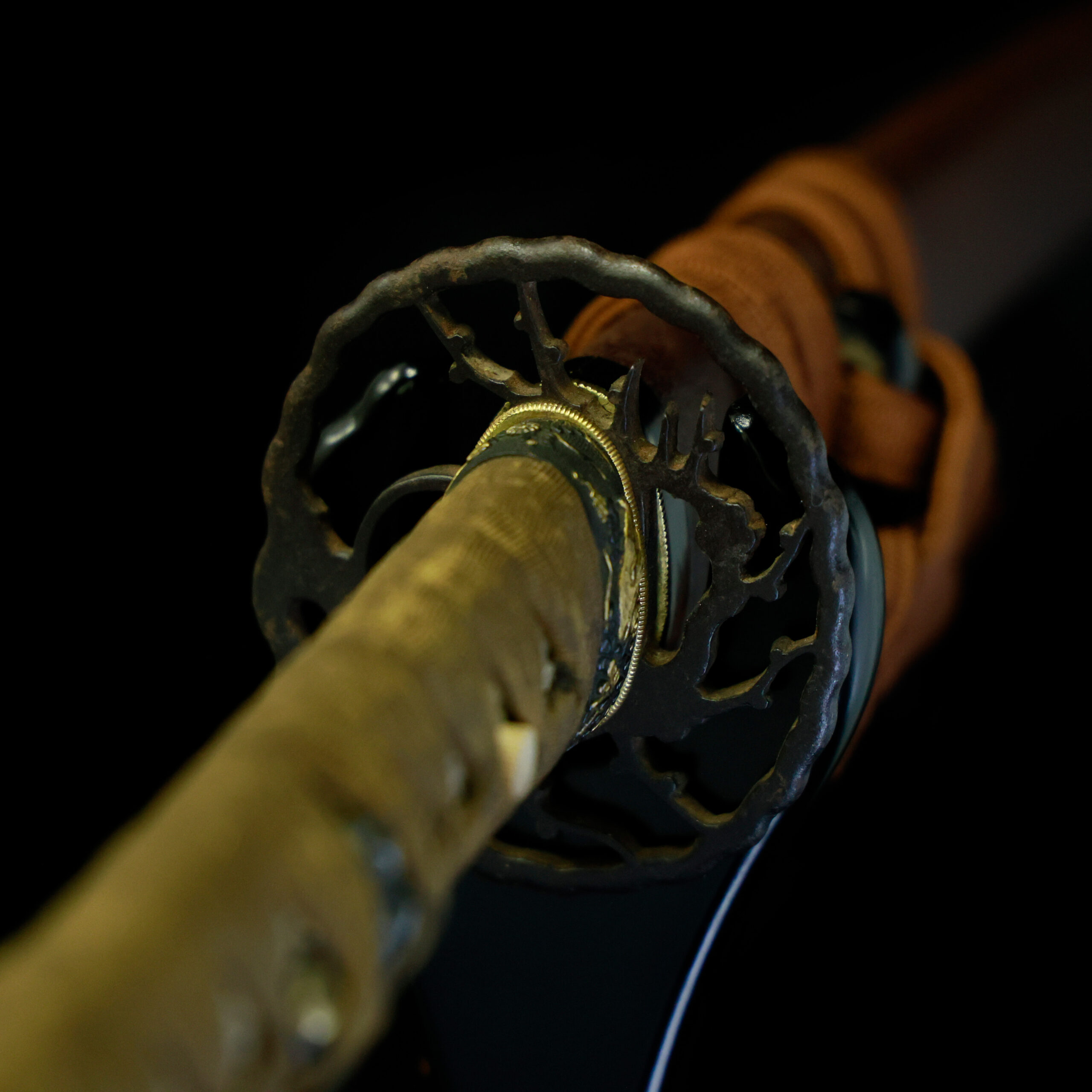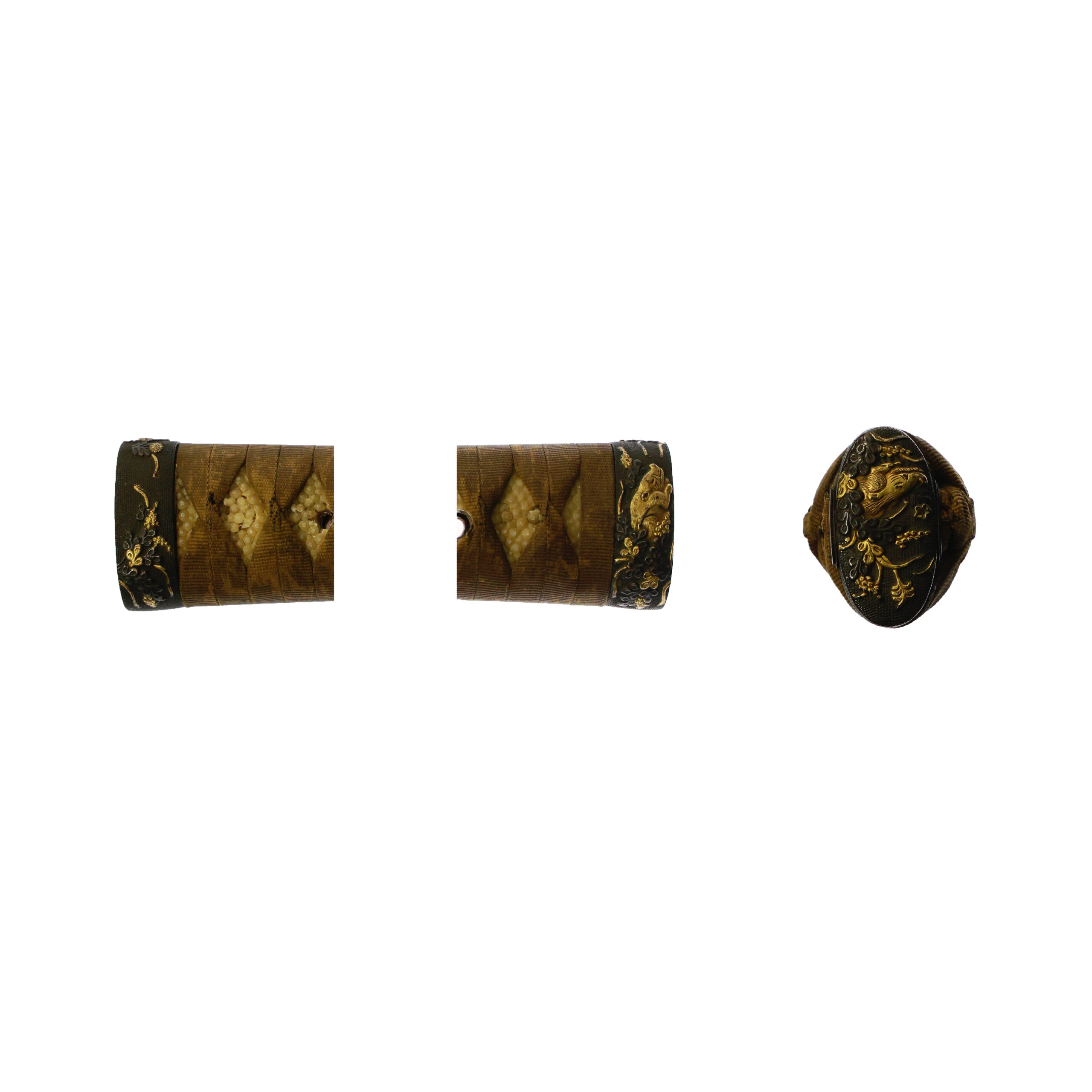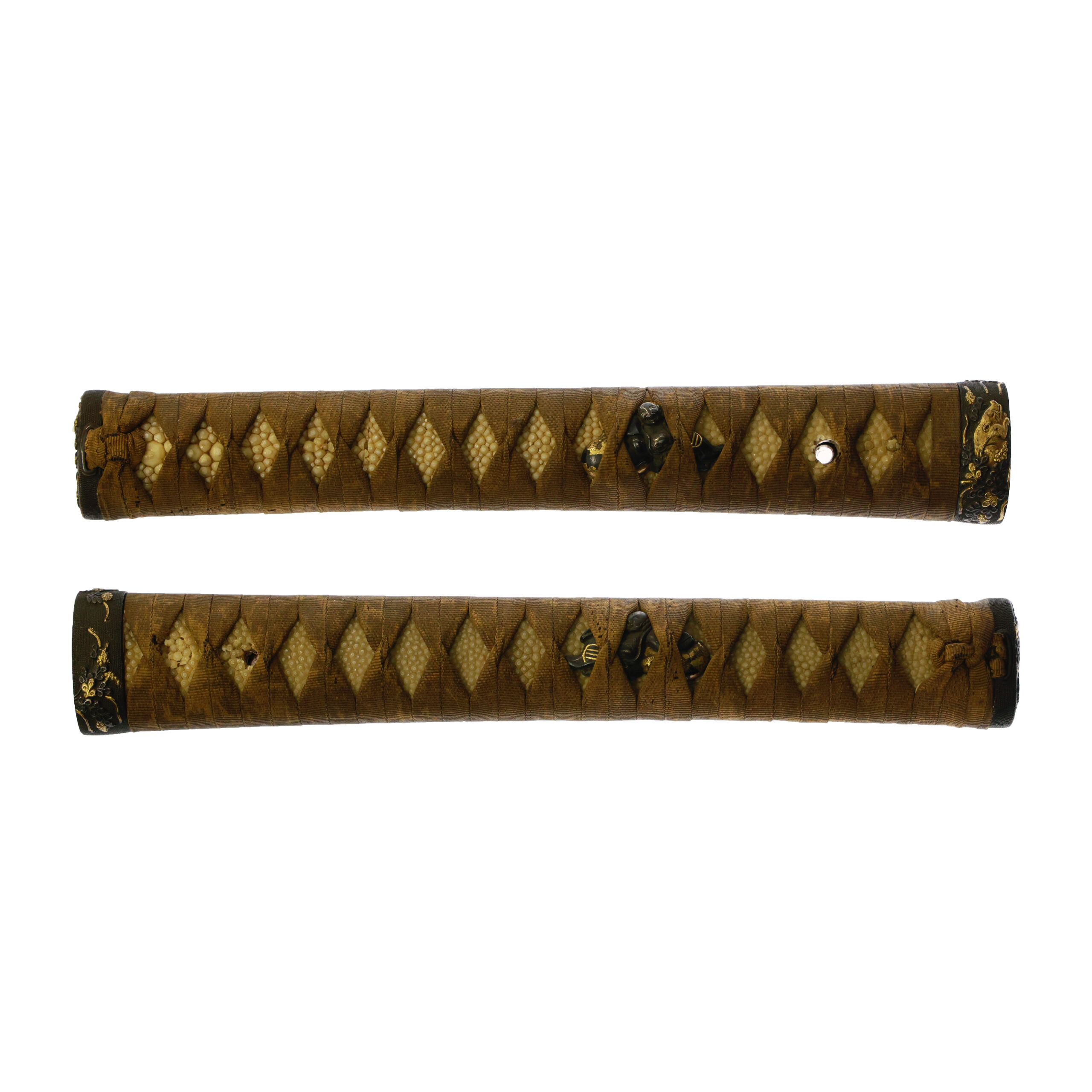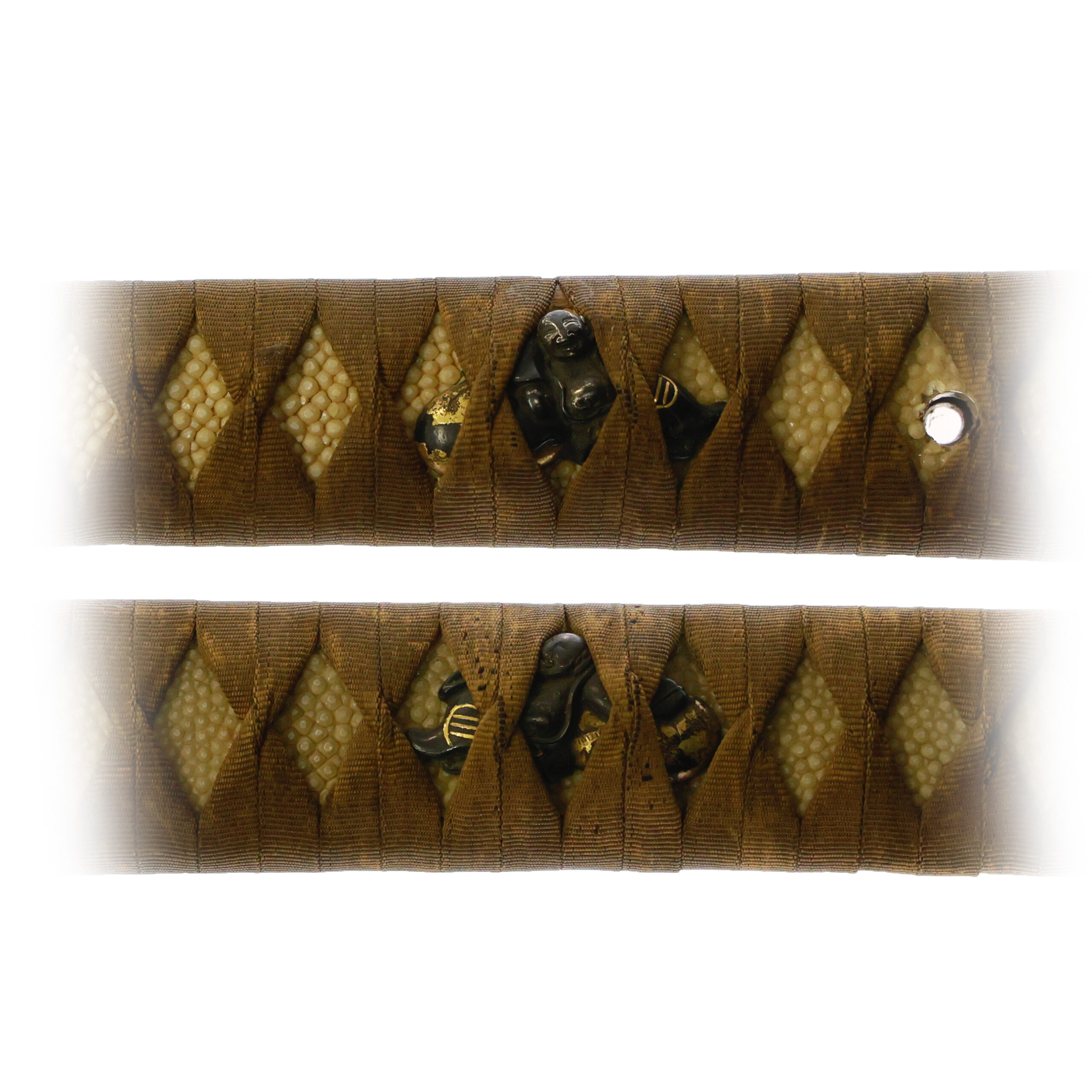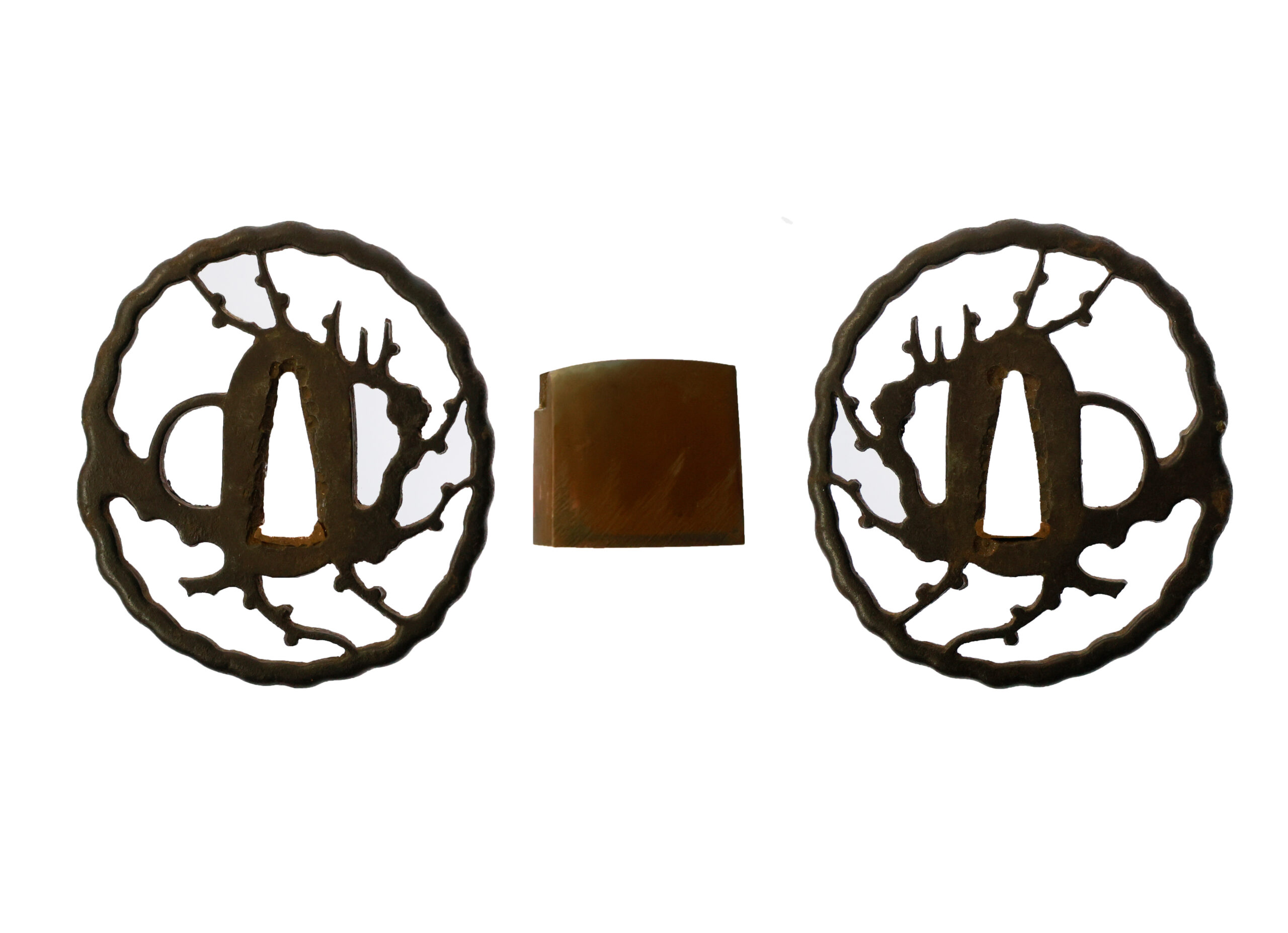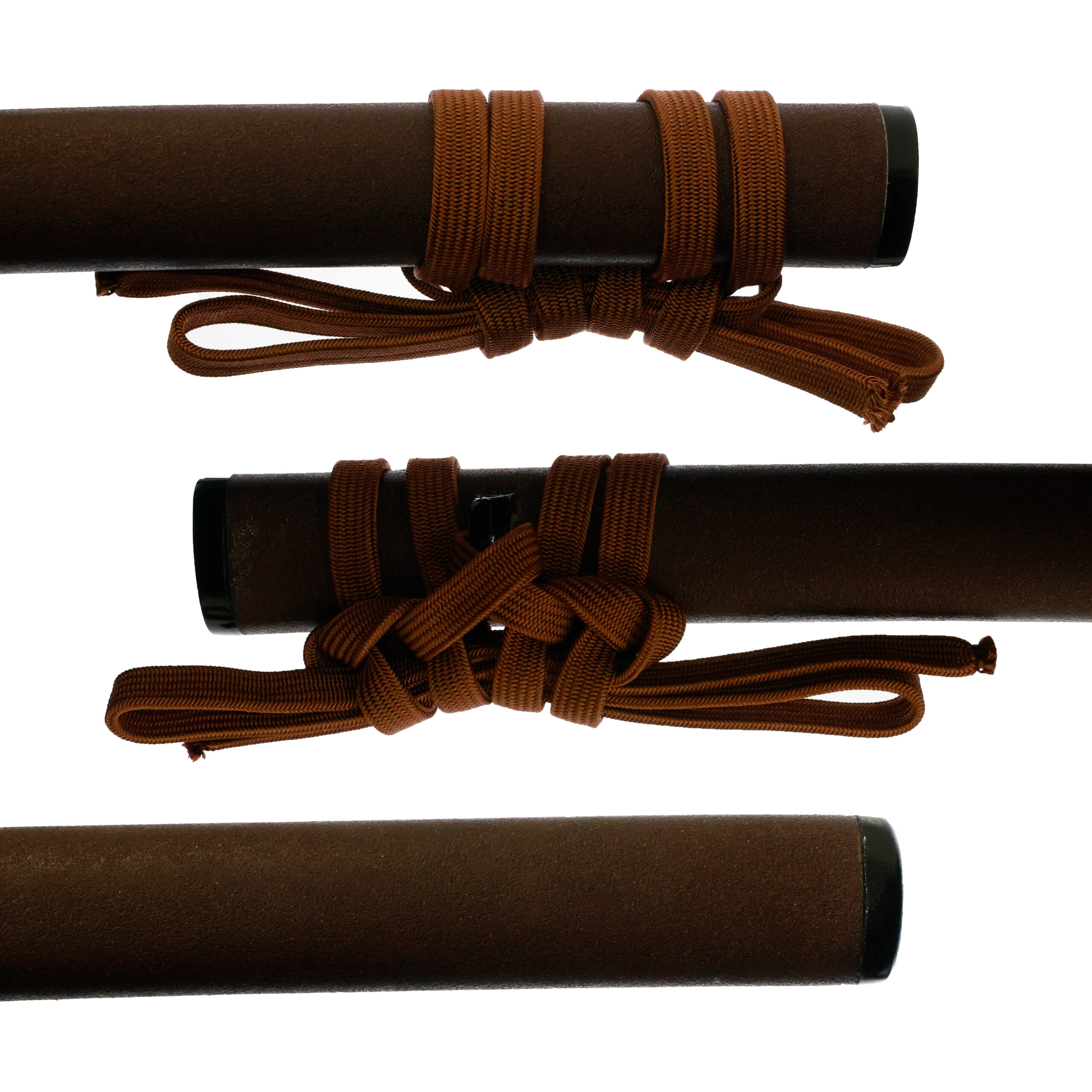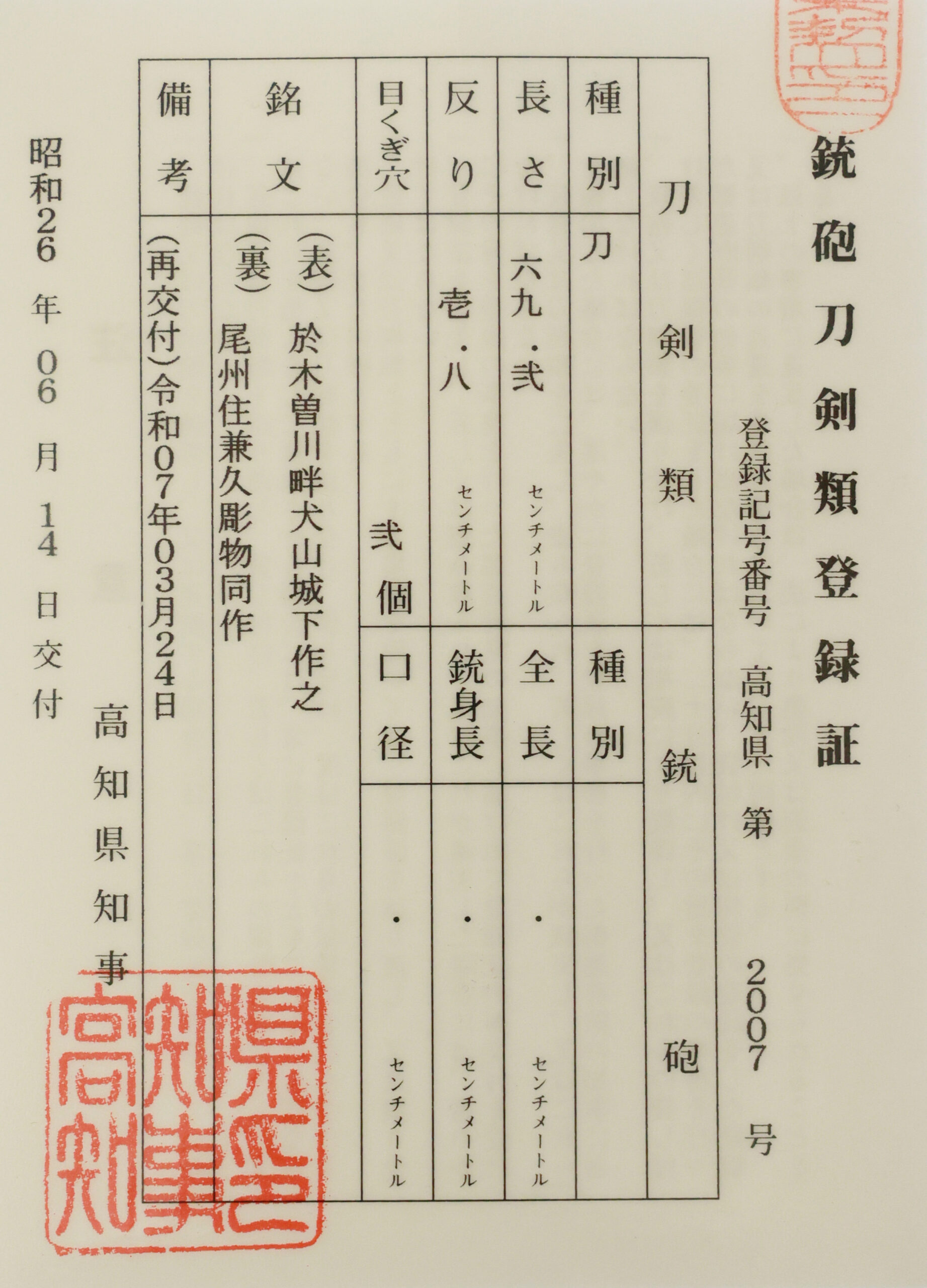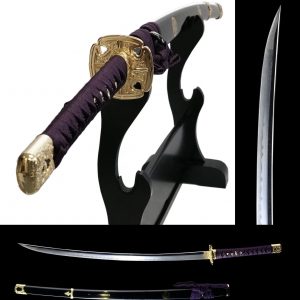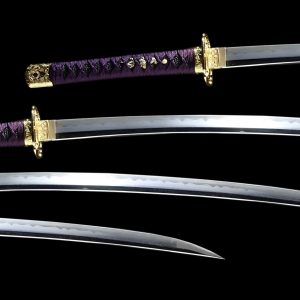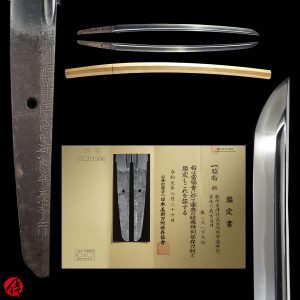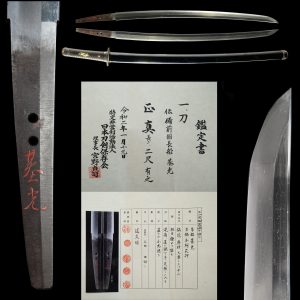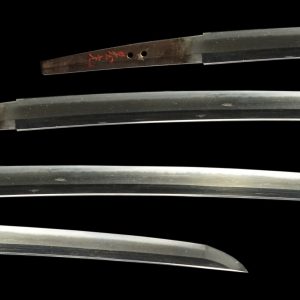Modern Authentic Japanese Sword Katana Signed by Kanehisa with NBTHK Hozon Certificate
【Description】
Summary
This blade is signed by Kanehisa (兼久), with the inscription “Bishū-jū” (尾州住), indicating that it was forged while Kanehisa was residing in Bishū—an old provincial name referring to the area around present-day Aichi and Gifu Prefectures. The signature also says 彫物同作 (Horimono Dosaku), meaning that the engraving was also made by the same swordsmith. the back of the tang says 於木曽川畔犬山城下作之 (Kisogawa Han Inuyama Jyoka ni oite Kore Tsukuru), indicating that he forged this blade near the Inuyama castle located in the vicinity of the River Kiso. Its NBTHK certificate says that it was made during the Showa era (Early-Mid 20th century).
Horimono (Engraving)
This blade features exquisite engravings (Horimono, 彫り物) on both sides of the blade.
On one side, an intricate carving of Fudō Myō-ō riding a dragon (倶利伽羅不動, Kurikara Fudō) is depicted. Fudō Myō-ō is a guardian deity in esoteric Buddhism, known as the “Immovable One.” He is revered for his role in repelling evil and guiding people toward the righteous path, making him especially venerated by samurai warriors.
The dragon depicted in this engraving is known as Kurikara Ryū-ō (倶利伽羅龍王), a dragon deity considered an incarnation of Fudō Myō-ō himself. Kurikara Ryū-ō is believed to be a divine protector, enveloped in blazing flames that burn away all obstacles and evil. While dragons are traditionally seen as powerful mythical creatures, Kurikara Ryū-ō embodies the very power of Fudō Myō-ō, cutting through ignorance and purging worldly desires. The image of Fudō Myō-ō riding atop the dragon symbolizes his absolute control over chaotic forces, guiding them toward justice and enlightenment.
Above Fudō Myō-ō, a Bonji (梵字) inscription is engraved. Bonji are Sanskrit characters used in esoteric Buddhism to represent Buddhas and Bodhisattvas, and the inscription on this blade is believed to invoke the divine protection of Fudō Myō-ō.
On the other side of the blade, an engraving of the Kurikara-ken (倶利伽羅剣) is featured. The Kurikara-ken is the sacred sword wielded by Fudō Myō-ō and is often depicted entwined with a dragon, symbolizing the power to cut through ignorance and evil. This esoteric Buddhist emblem was believed to provide protection and spiritual strength, and samurai warriors often incorporated such motifs into their swords as a source of mental and spiritual support. The design of this Kurikara-ken follows the form of the Sanko-tsuka-ken (三鈷柄剣, Three-pronged Vajra Sword), a sacred tool in esoteric Buddhism used in rituals, prayers, and for warding off evil.
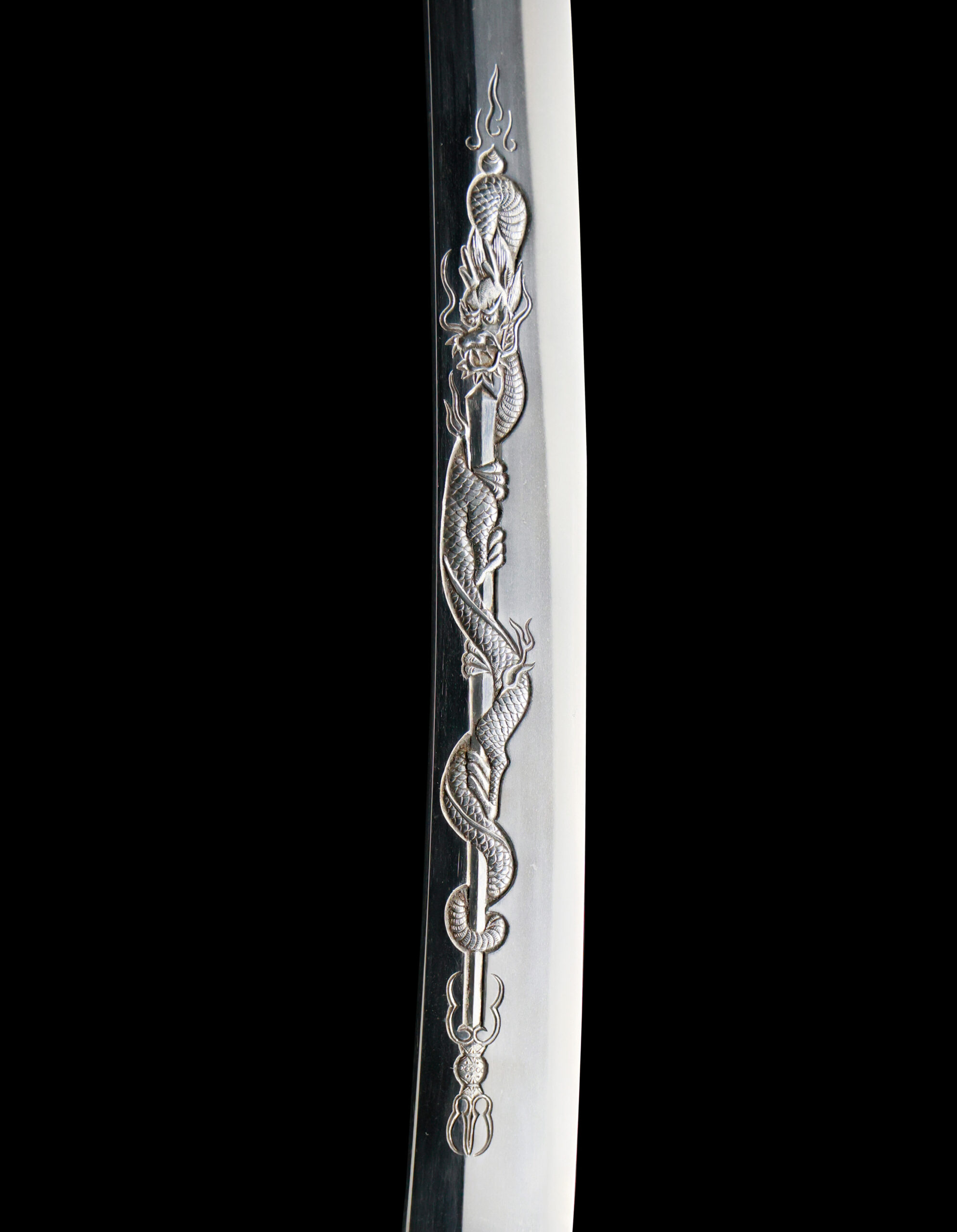
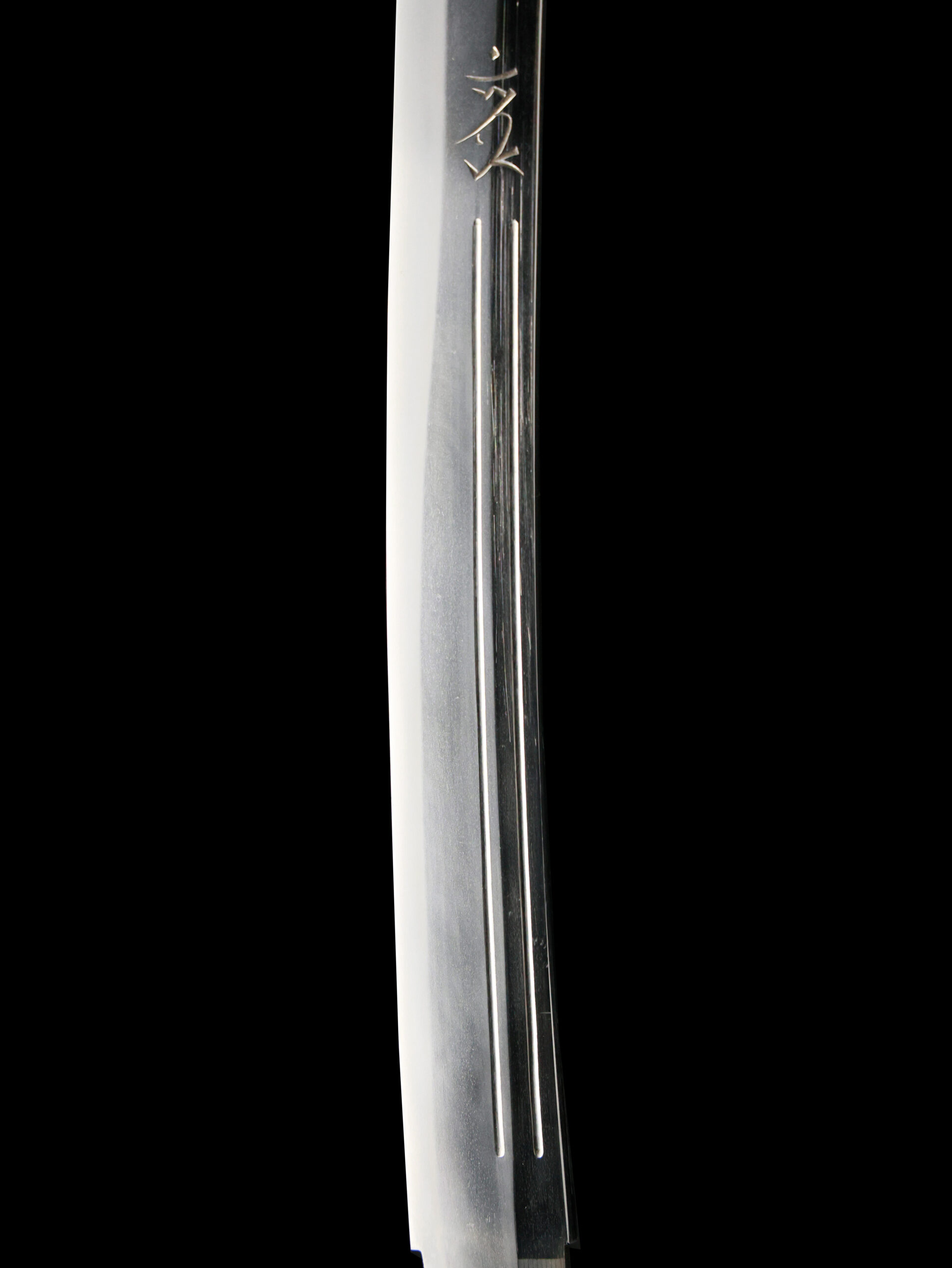
This blade is appraised as a Hozon Touken (保存刀剣) issued by NBTHK (Nihon Bijutsu Touken Hozon Kyokai: 日本美術刀剣保存協会). This authentication paper was only given to authentic Japanese swords, well preserved and high quality with artistic value.
*Please keep in mind that there are a couple of Kitae Kizu on this blade. If you like to know the detailed condition, please feel free to contact us.
【Blade】
Cutting Edge Length(Nagasa):69.2 cm (27.2 inches)
Curvature(Sori):1.8 cm (0.70 inches)


Hamon:
The crystalline structure which forms along the cutting edge of a blade as a result of the hardening process
Jimon(Jihada):
visible steel surface pattern created by folding and hammering during forging process

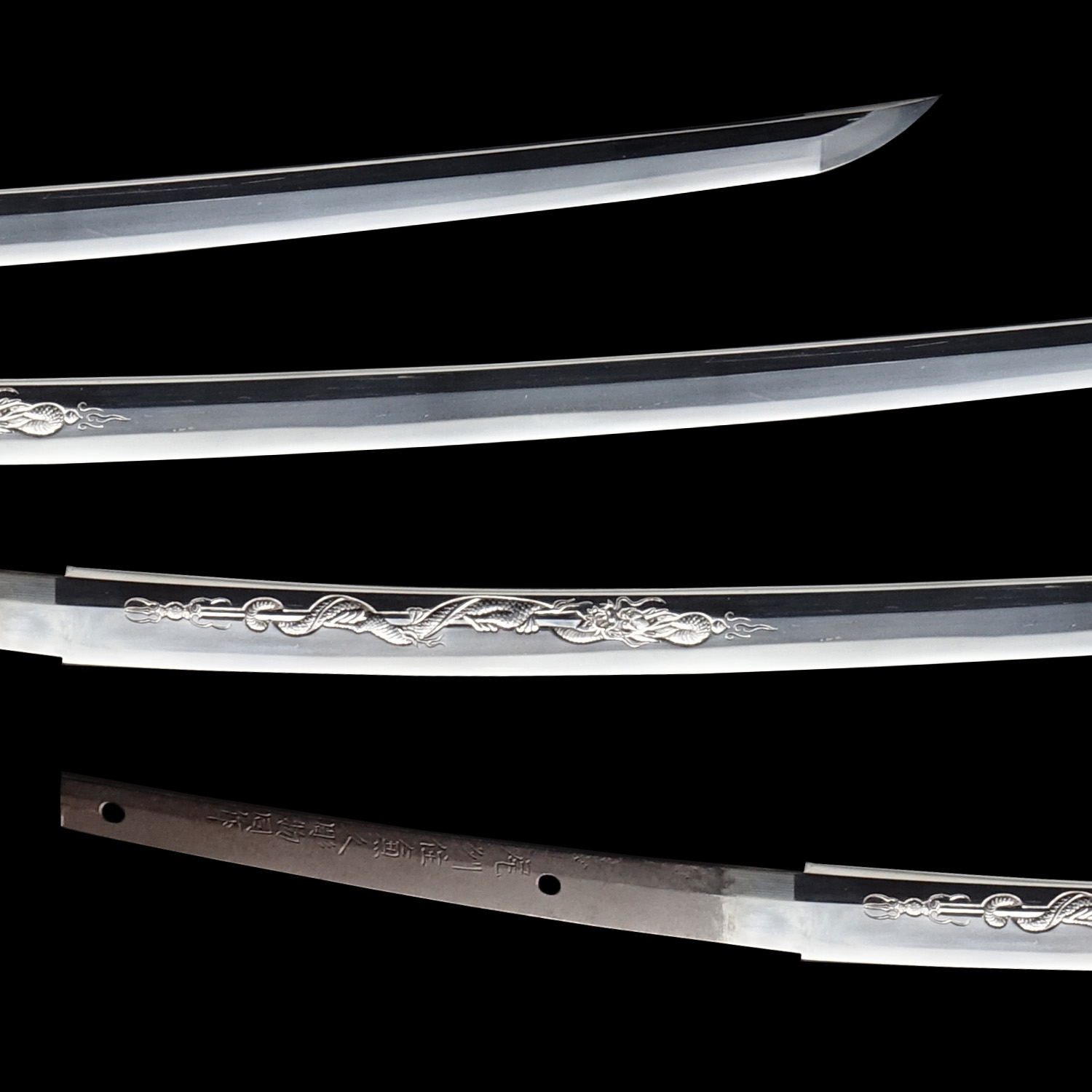
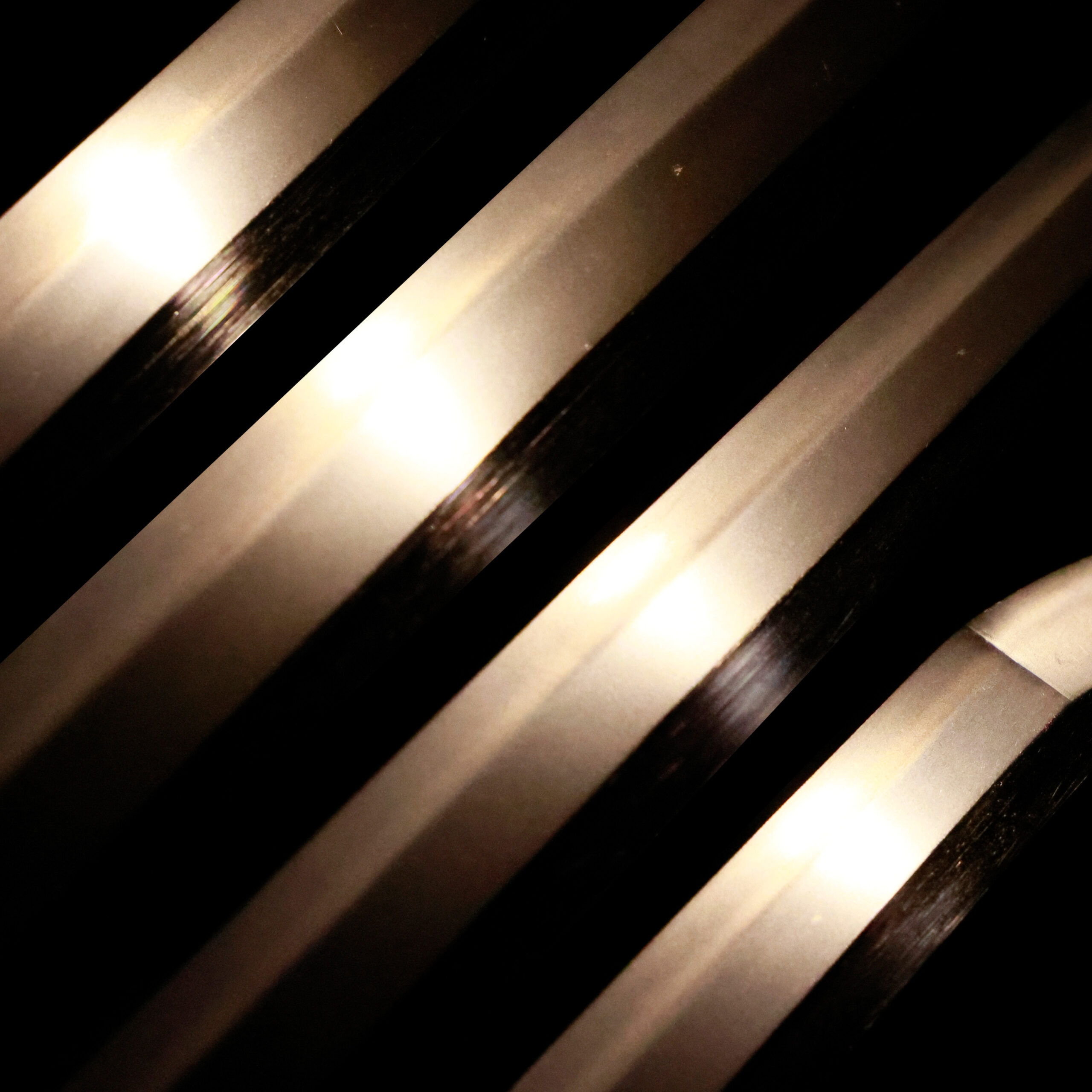
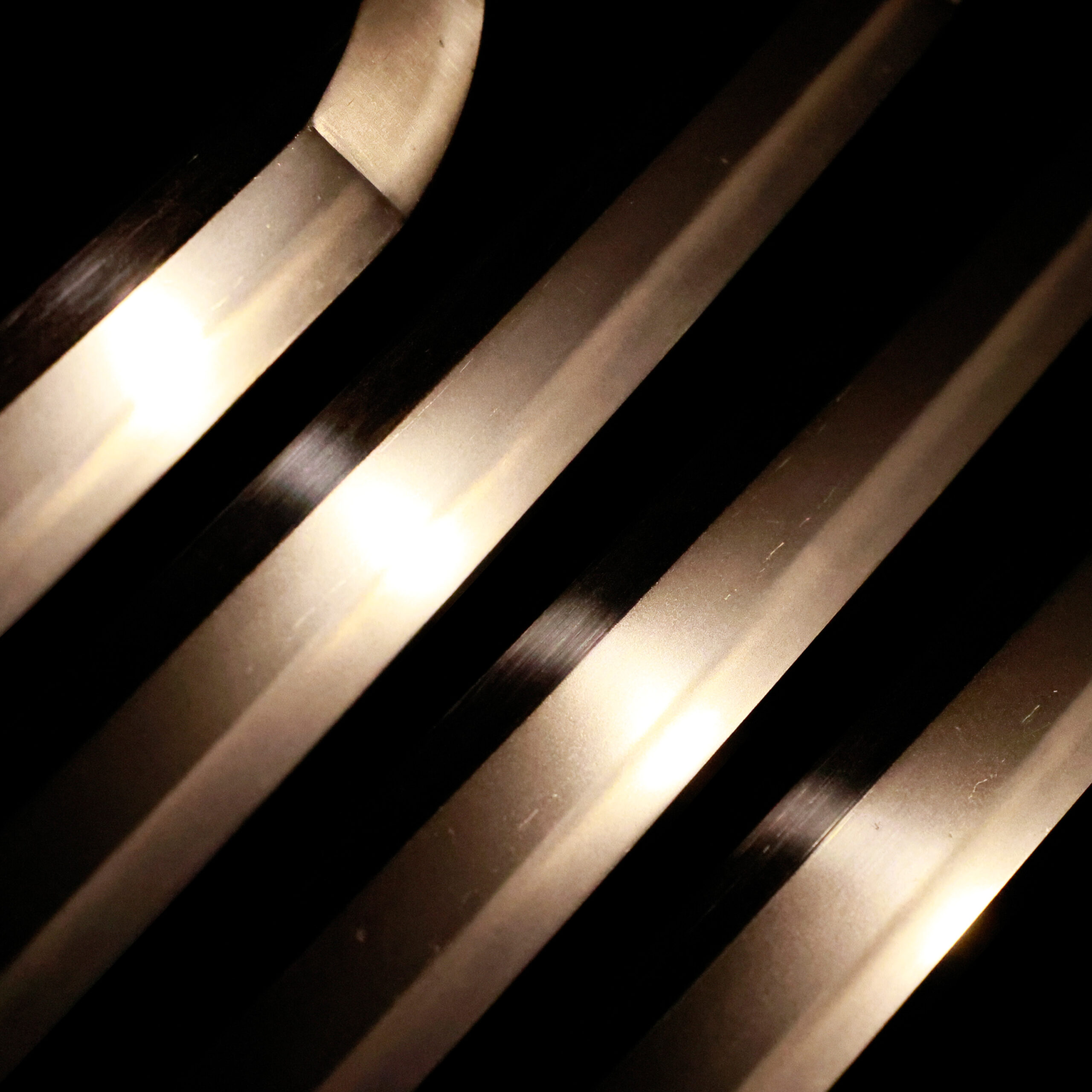
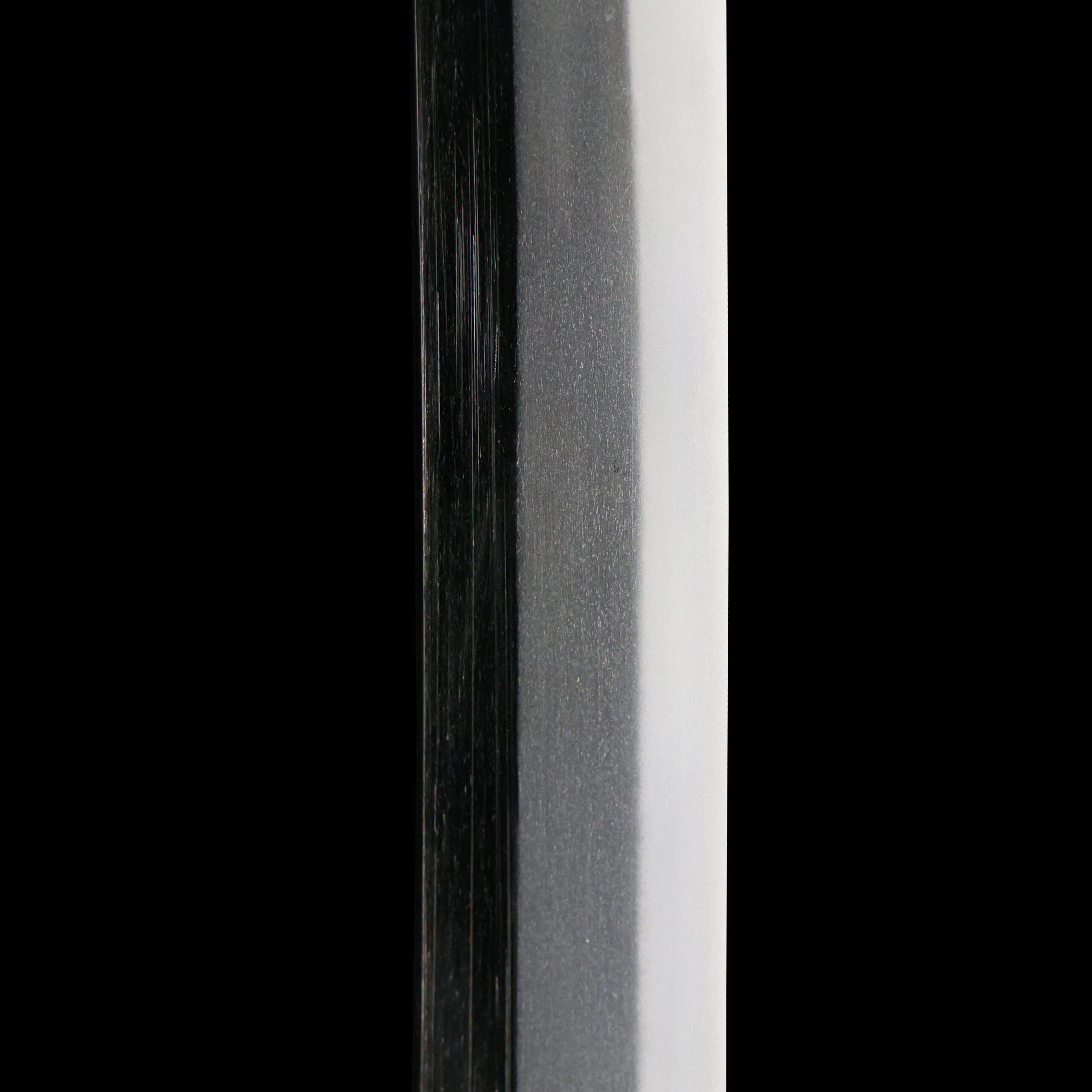

Kissaki:Kissaki is the tip of the Japanese sword.
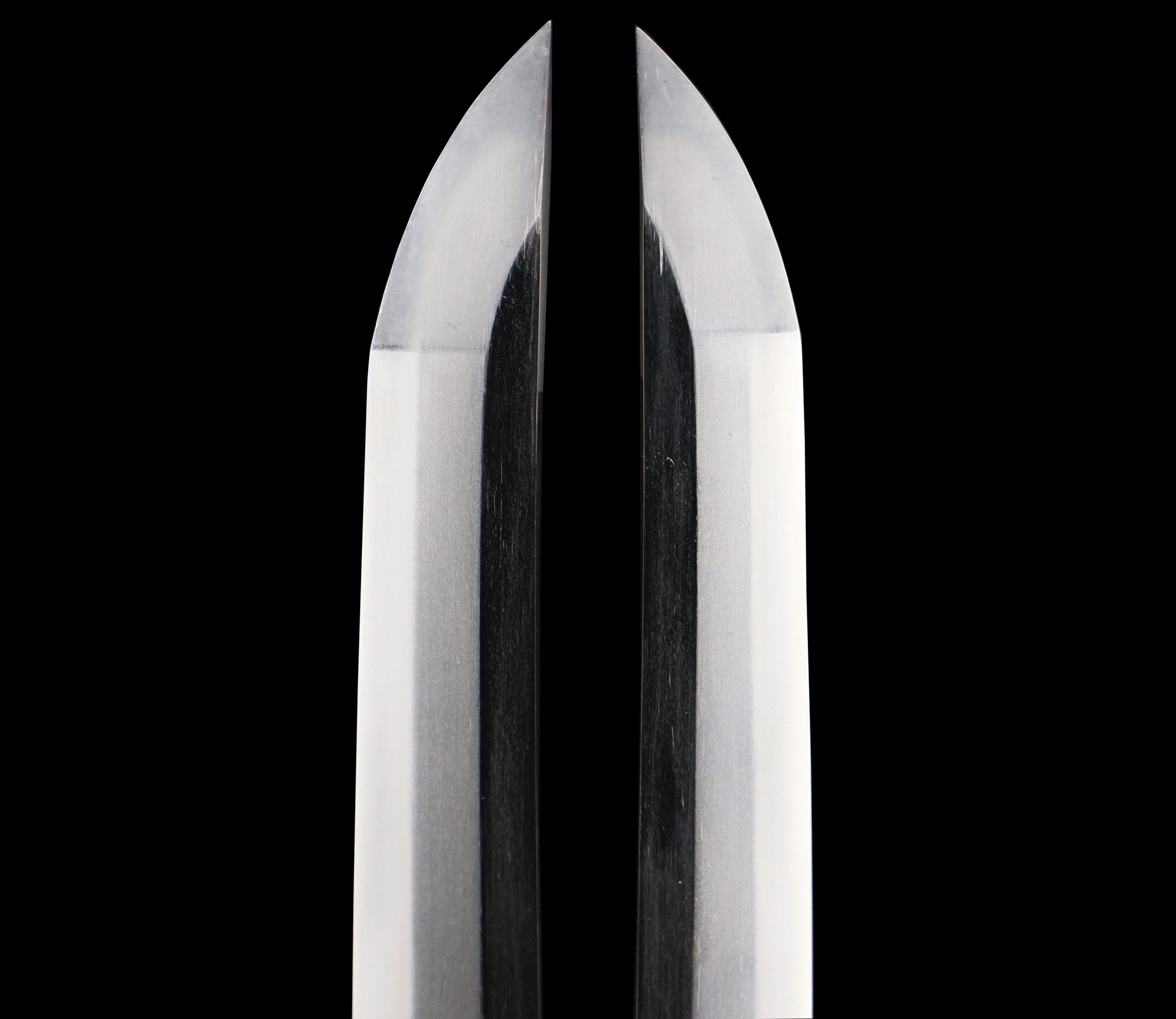
Nakago:Nakago is the tang of the Japanese sword.
Japanese swordsmiths left the black rust on the tang because it prevents red rust while the tang is in its handle. And the discoloration of the tang was created over time, and it is a great indicator for a Japanese sword specialist to estimate when the sword was forged.
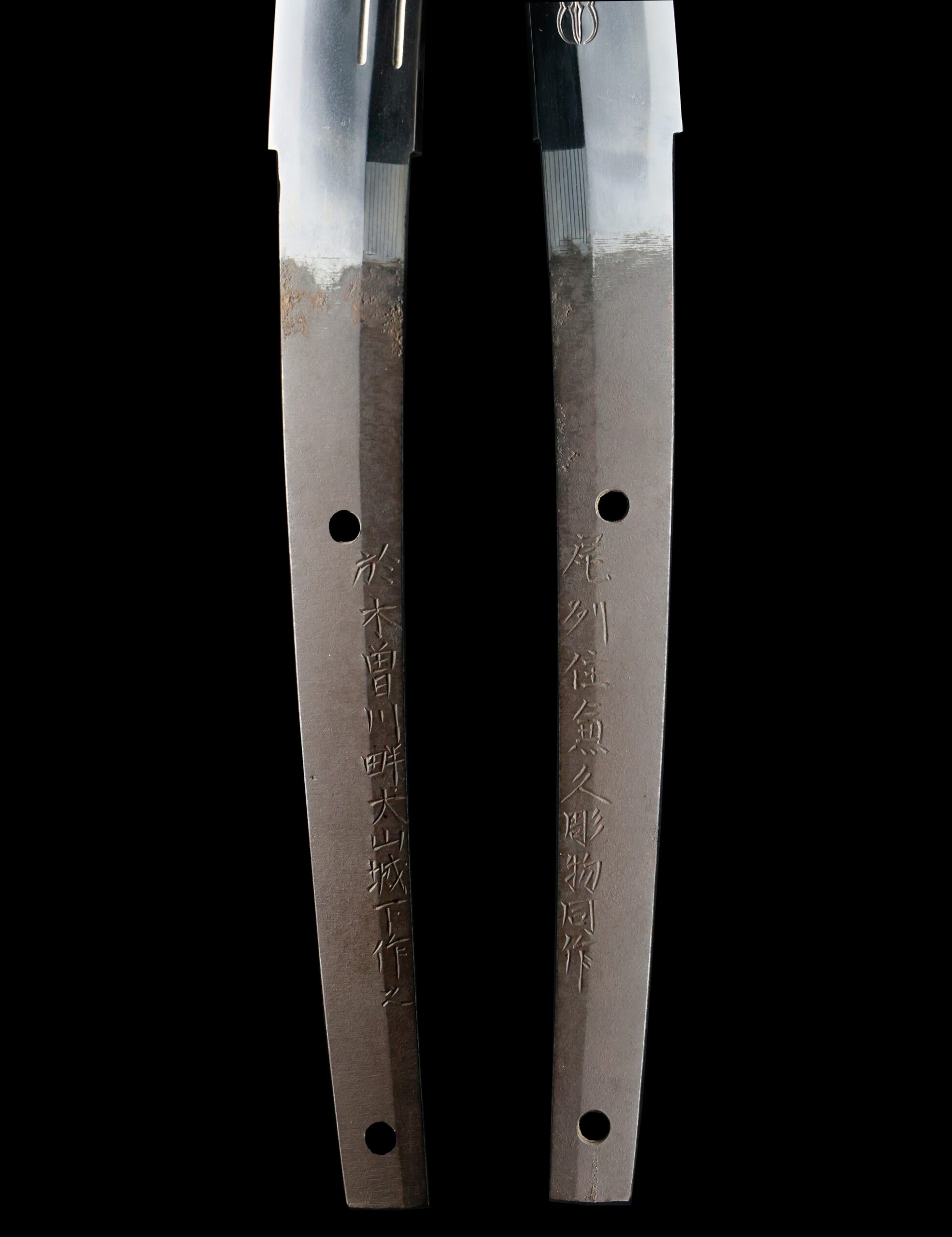
Koshirae:Koshirae is the mounting of the Japanese sword. There are several parts that consist of Koshirae such as Saya (Scabbard), Tsuka (Handle), Tsuba (Handguard).

Fuchi-Kashira:A pair of matching sword fittings that cover the upper and bottom parts of its sword hilt.
The fuchi-kashira is decorated with a wild boar (猪, inoshishi) and bush clover (萩, hagi).
The combination of a boar and bush clover is a classic seasonal motif in Japanese art, and is also well known from hanafuda (花札), traditional Japanese playing cards. In the September suit of hanafuda, bush clover is often depicted alongside a boar, symbolizing autumn and the natural harmony between animals and seasonal flora. This pairing conveys both aesthetic and cultural meaning, reflecting appreciation for nature and the passing of seasons.
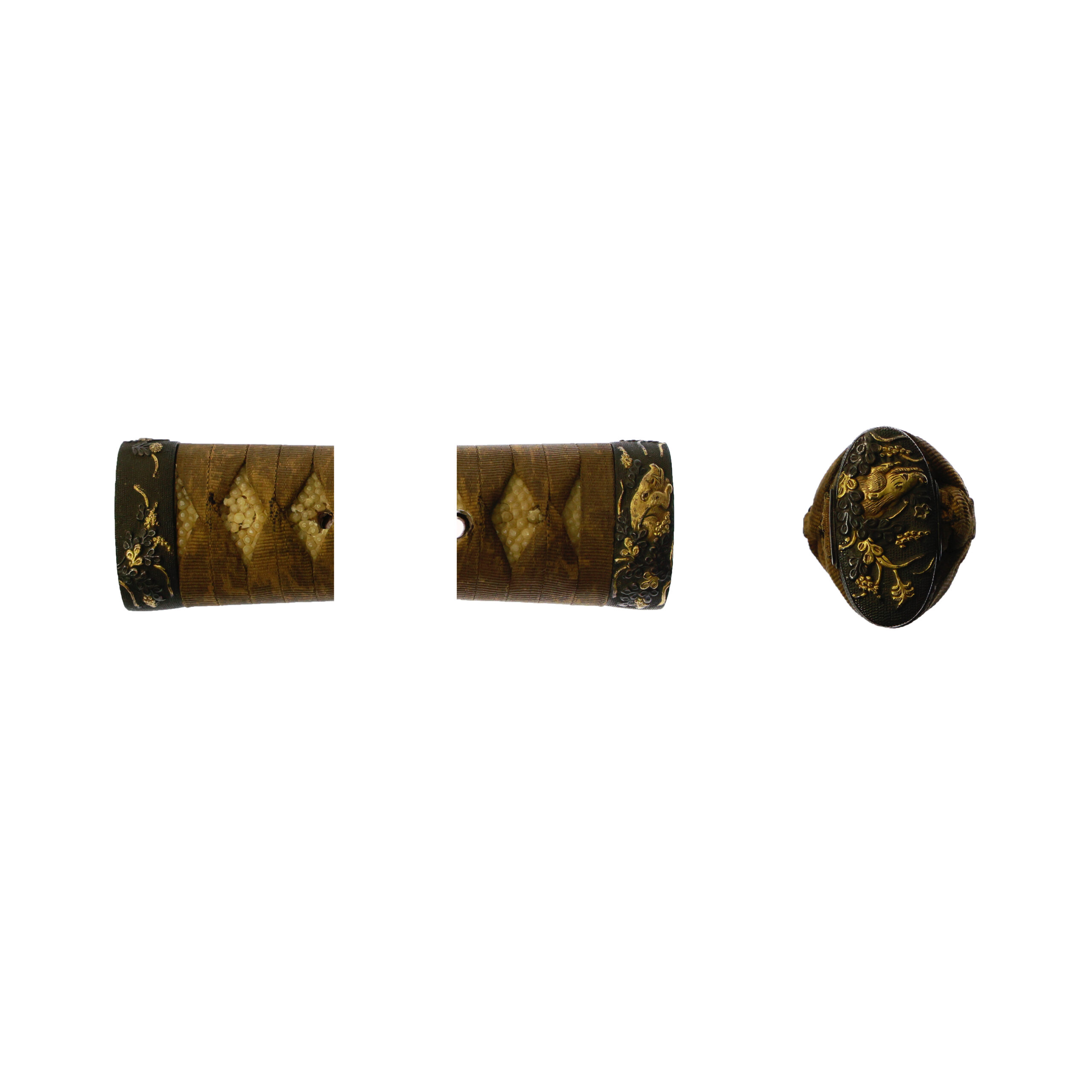
Tsuka and Menuki:Tsuka is the handle of the Japanese sword and Menuki is its decoration.
The menuki features a figure wearing a kimono adorned with the Hikiryo-mon (引両紋), a traditional Japanese family crest consisting of one or more parallel lines. This design is most famously associated with the Ashikaga clan, founders of the Muromachi shogunate, whose variation known as “Maru ni Futatsu Hiki” (two lines within a circle) became a symbol of shogunal authority. The crest is also recorded in the Kenmon Shokamon—a compendium of family crests compiled during the Muromachi period—alongside the Goshichi no Kiri crest, which was bestowed by the imperial court. Given that the figure is depicted wearing a garment bearing the Hikiryo crest, it is likely that the person represented is of high social status.
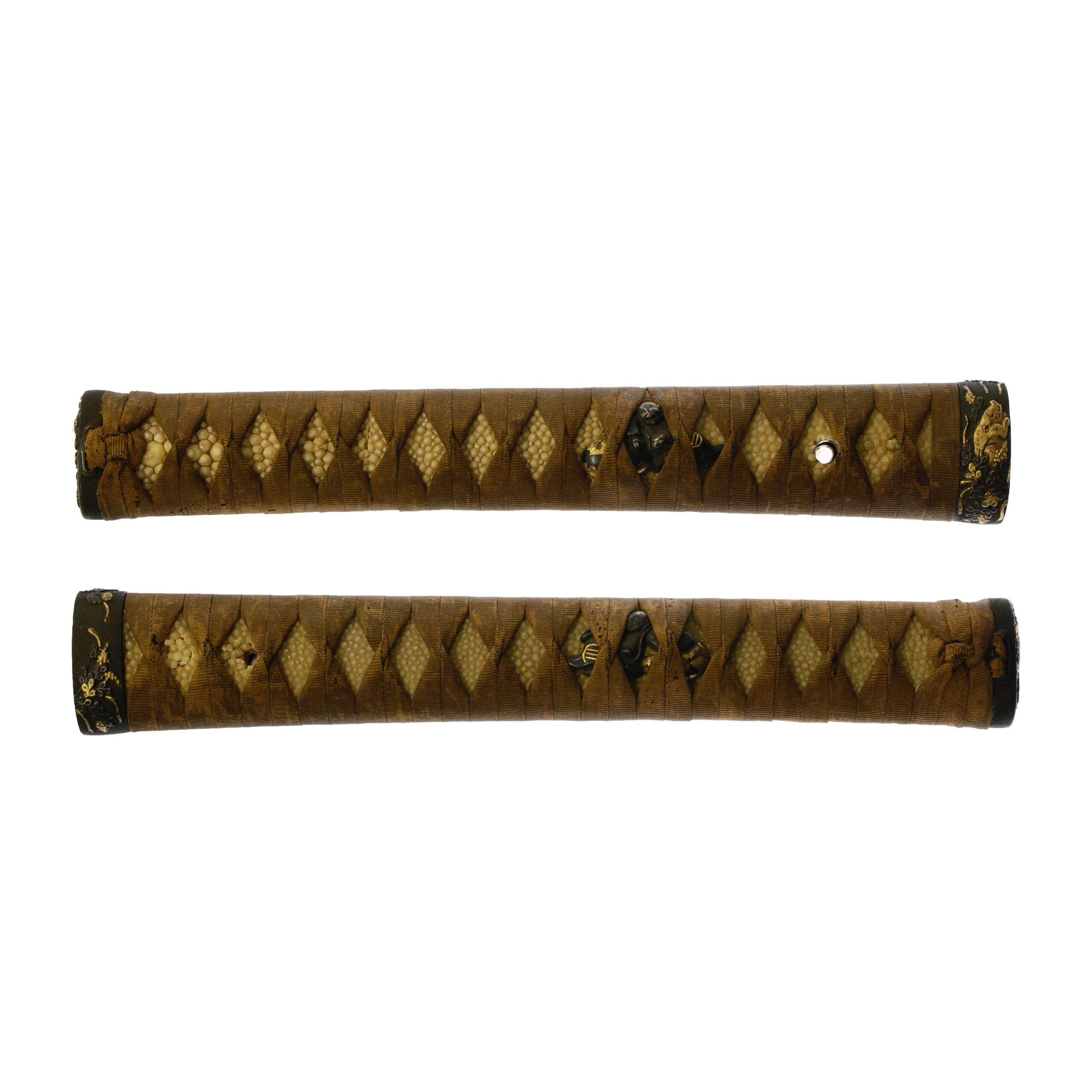
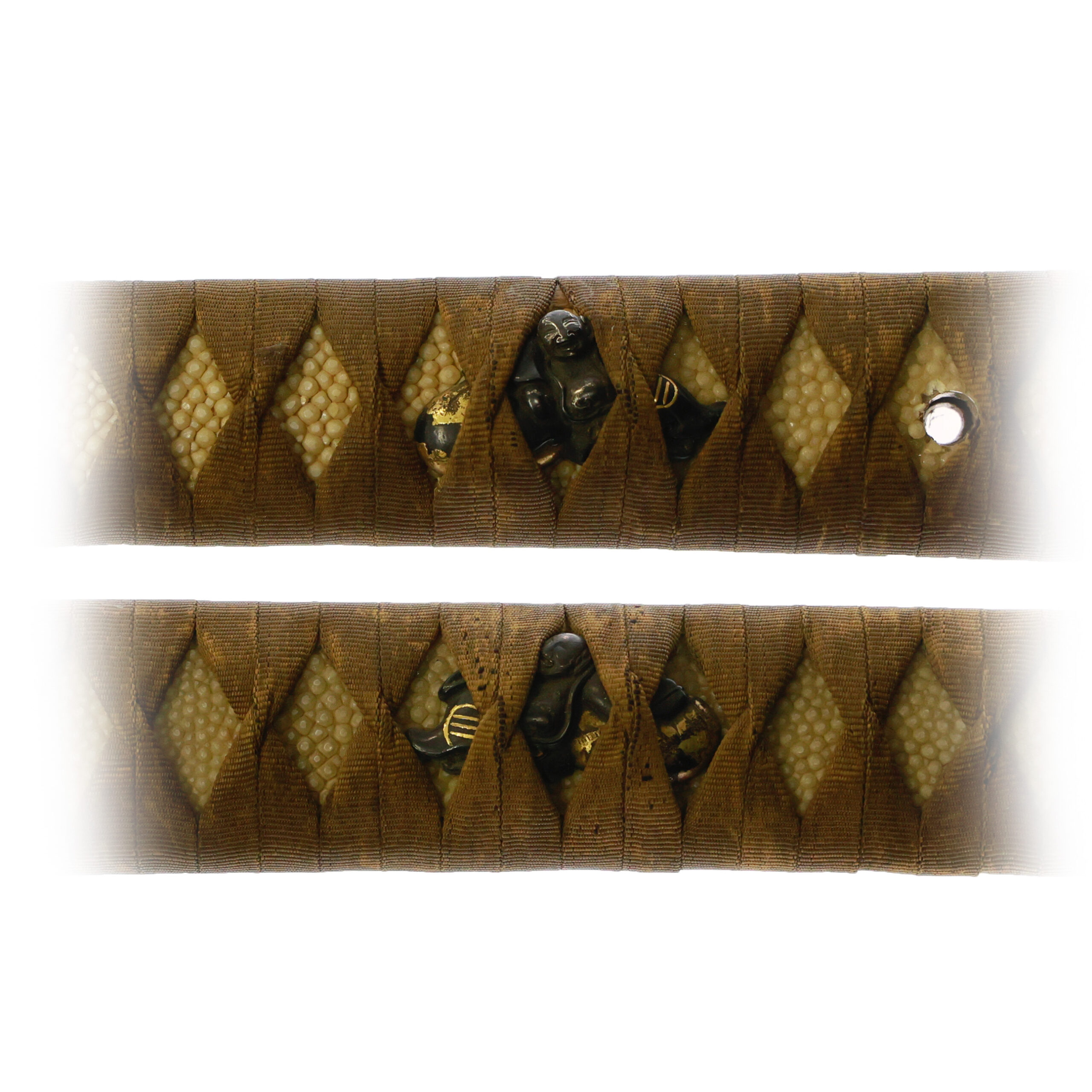
Tsuba and Habaki:Tsuba is the handguard for the Japanese Sword and Habaki is the equipment to make the blade not touch its scabbard inside. It prevents the blade from getting rusty and chipped.
The tsuba features what appears to be a plum tree in bud, rendered using the sukashi-bori (透かし彫り, openwork) technique. In Japanese culture, plum blossoms (梅, ume) are known as the first flowers to bloom in early spring, symbolizing perseverance and renewal. The budding branches are thought to represent the anticipation of spring and the hope for new beginnings.
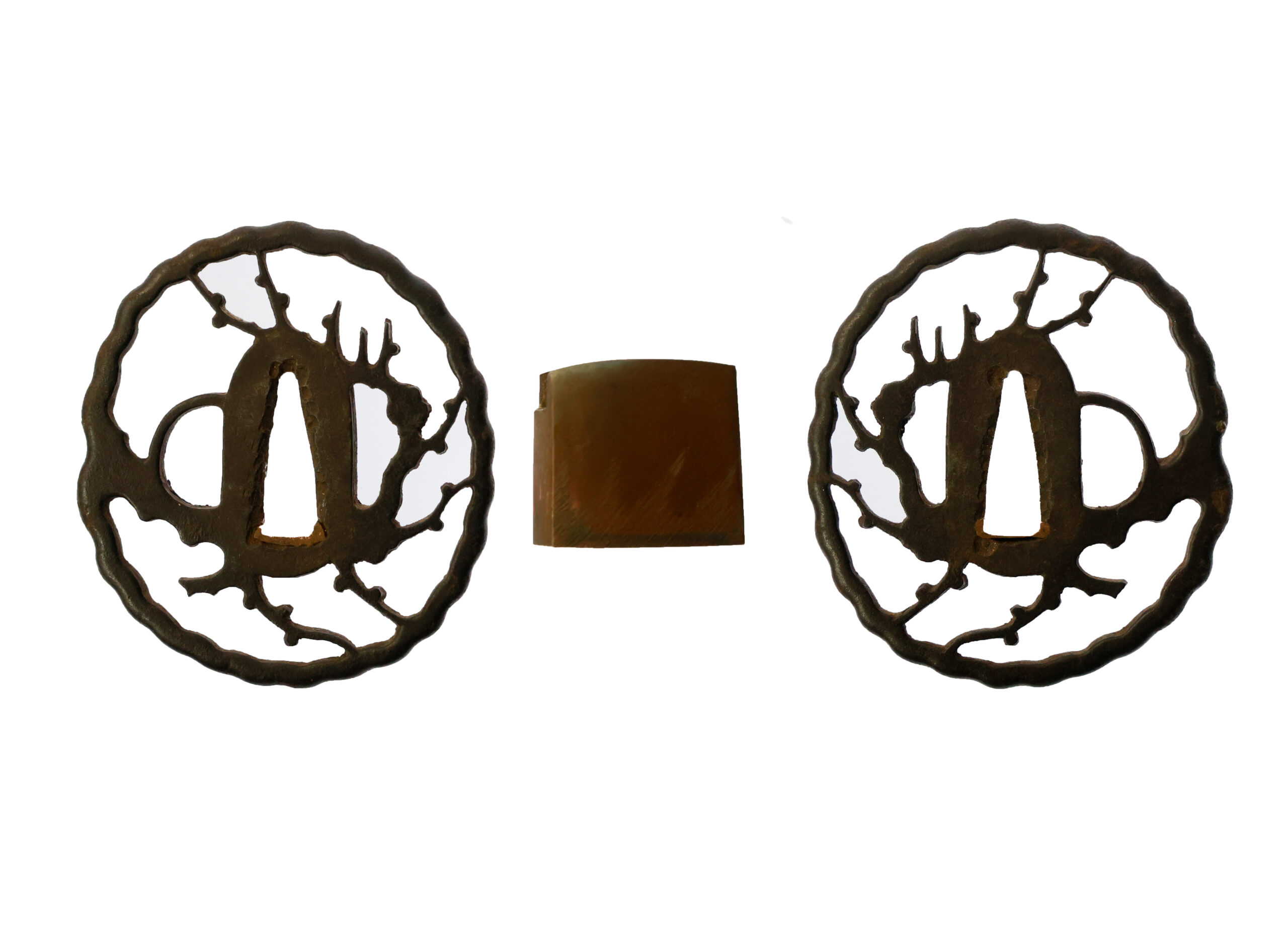
Saya: Saya is the scabbard for the Japanese sword.
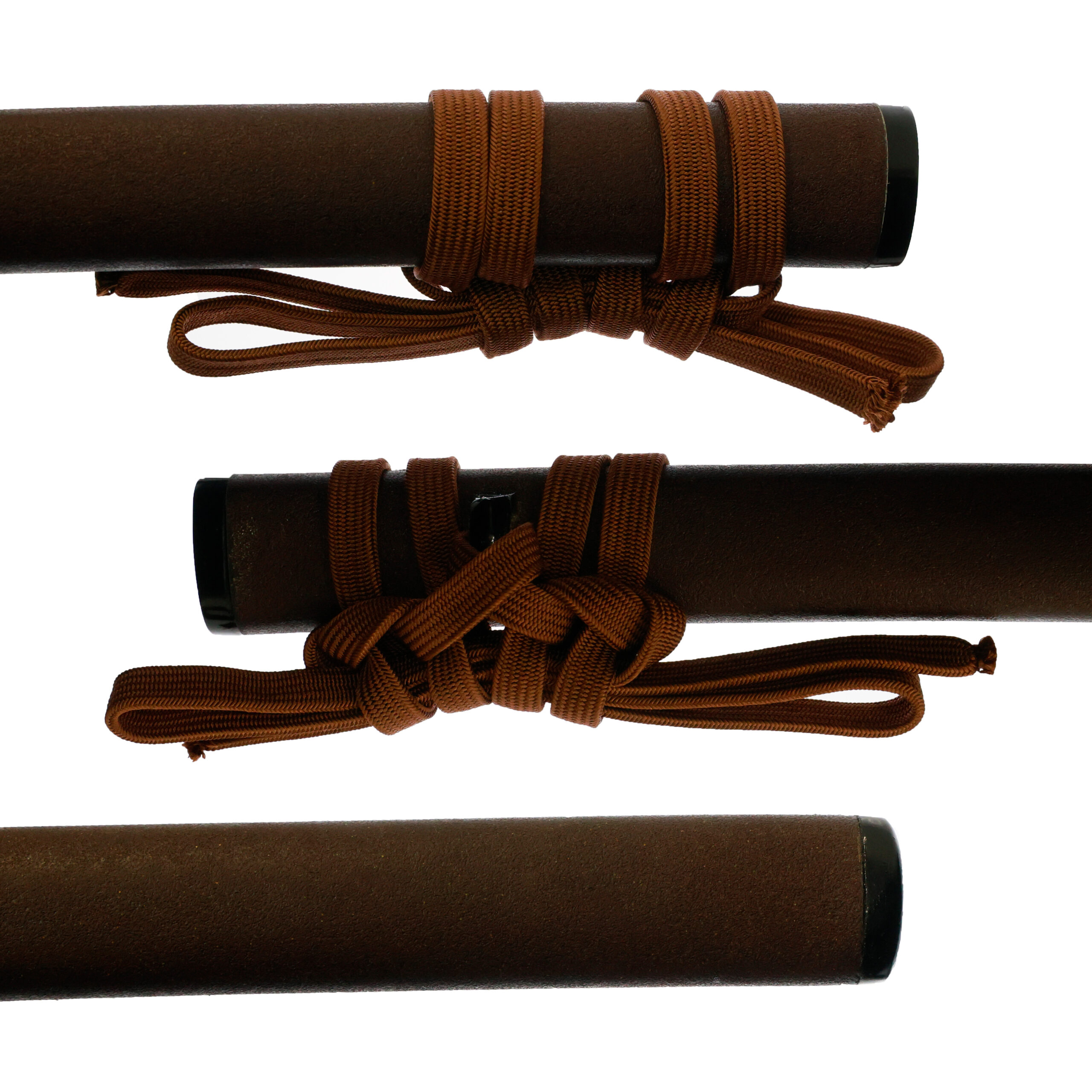

Authentication Paper: NBTHK Hozon Certificate for the blade (No.3034307)
NBTHK, also known as Nihon Bijutsu Touken Hozon Kyokai (the Society for the Preservation of the Japan Art Sword), is one of the oldest Japanese sword appraising organizations in modern-day Japan. They appraised it as Hozon Touken, the blade worth preserving for Japanese society on May 31th in 6th year of the Reiwa era (2024). The purchaser will receive the original certificate as well. We can also translate what is written into English and make a PDF file for your record if you request.
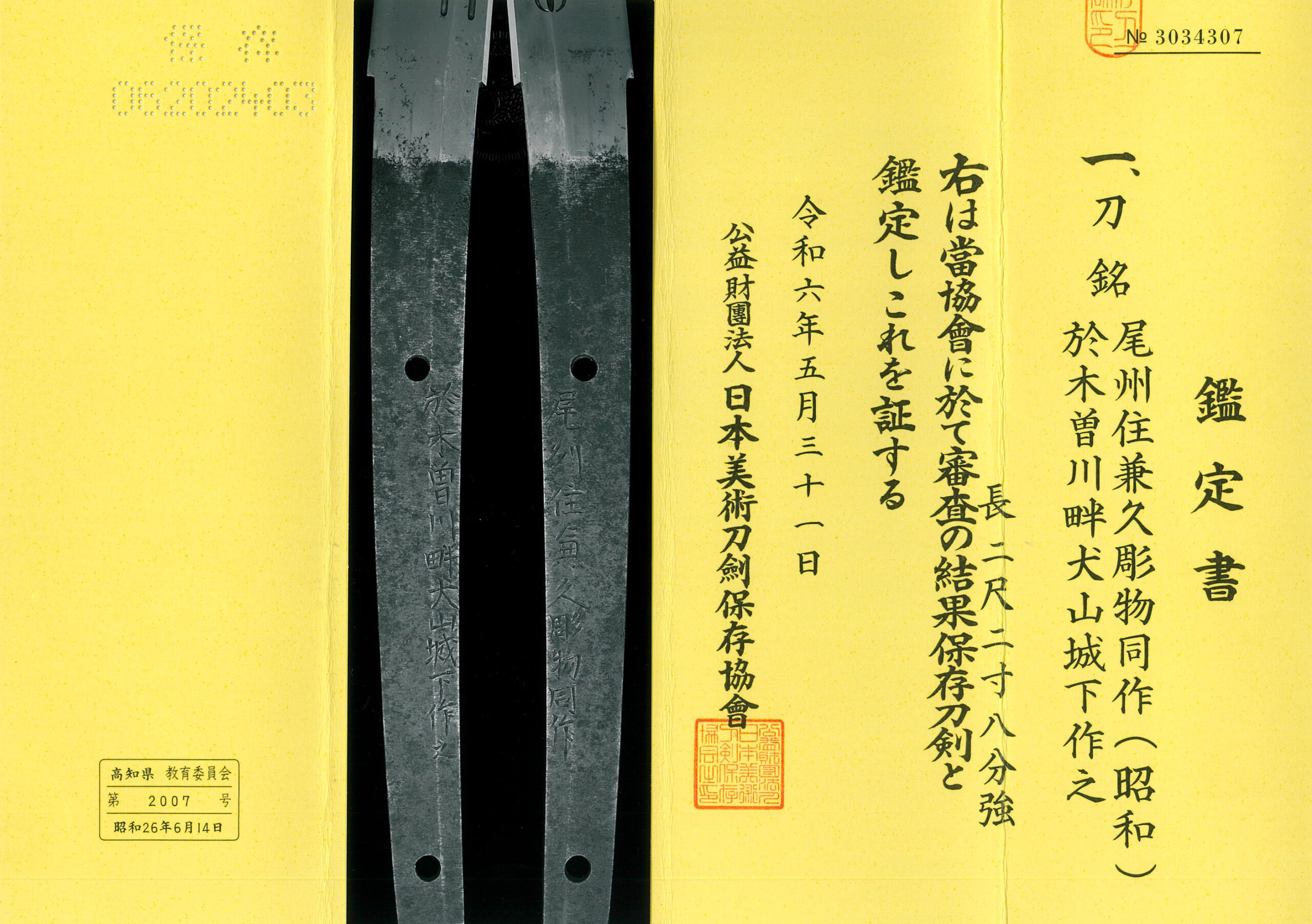
Registration Number : Kouchi 2007
The Board of Education in Kouchi prefecture issued a registration paper for this sword. It is called Jyu Hou Token Rui Tourokusho (銃砲刀剣類登録証). Bunkacho (The Agency for Cultural Affairs) acknowledges a Japanese sword with this paper as a work of art.
The sword needs to be traditionally hand-forged and made of Tamahagane carbon steel to be registered in the system. With this paper, its owner in Japan can legally own an authentic Japanese sword. Based on this registration number, we will apply for its export permit.
This paper will need to be returned to the board of education when the sword is being shipped abroad, but you can receive a copy of it. An English translation of this registration paper is available on request.
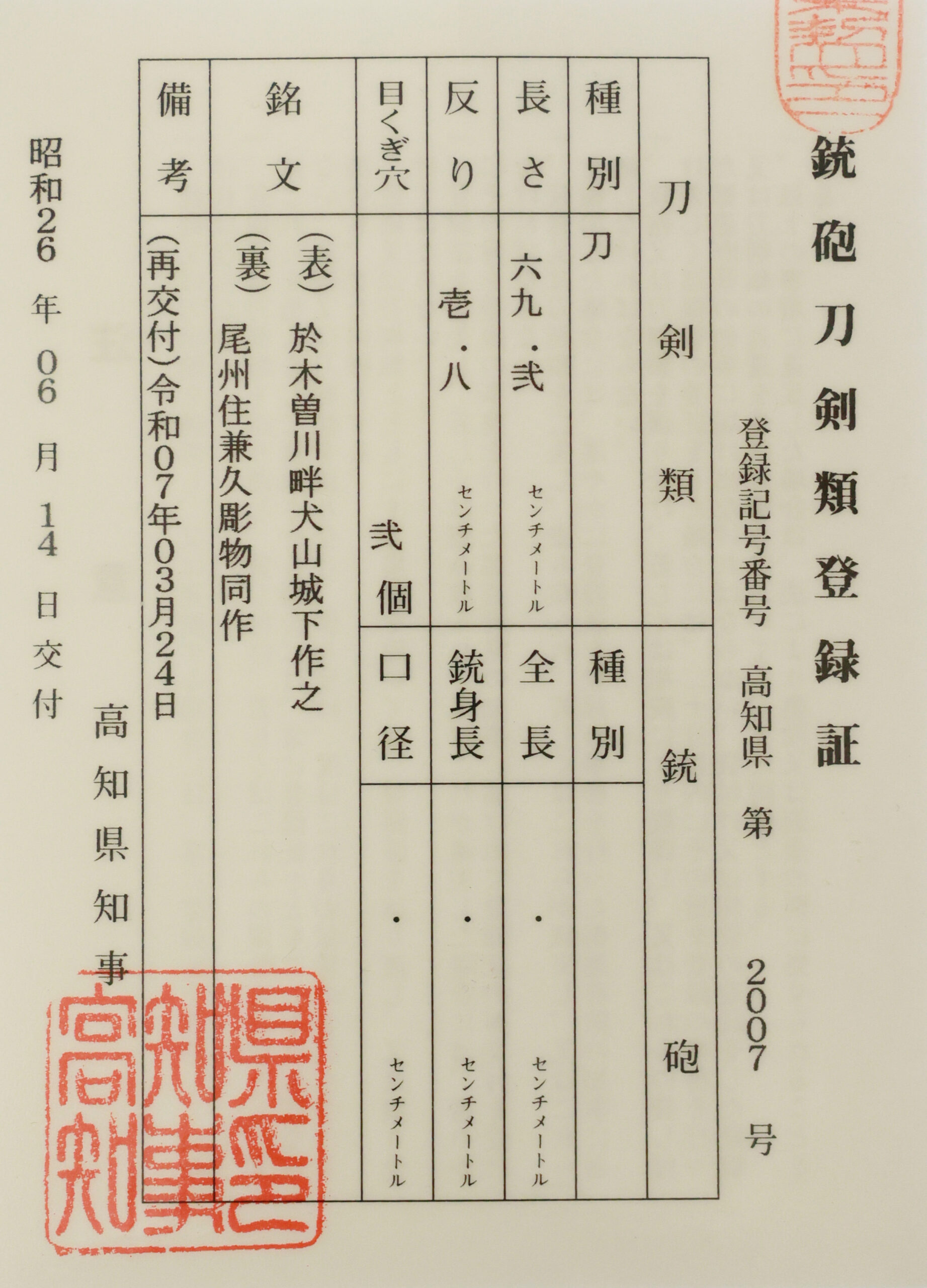

—————————————————————–
【About us】
Samurai Museum is located in Tokyo, Japan, exhibiting antique artifacts related to the Samurai history. Samurai Museum Shop is the place for those who are interested in Japanese culture and craftsmanship. We deal with antique Samurai swords/armor, traditional crafts made in Japan and so on.
【Japanese Sword& Export Process】
The Japanese swords we deal with are hand-forged edged swords made in Japan. It was made from the traditional carbon steel called TAMAHAGANE(玉鋼). Samurai Museum is familiar with the proper legal procedure for an antique/ authentic Japanese sword to be exported from Japan. We have sent more than 1000 Japanese swords for the past few years (~2025) to amazing owners who appreciate its historical value.
Each Japanese sword is registered under the Agency for Cultural Affairs and the Board of Education in Japan. They issue a registration paper for each Japanese sword for its owner in Japan to legally possess it. The Japanese sword with its registration paper means it was traditionally hand-forged in Japan.
To legally export the sword from Japan to other countries, we will have to apply for its permit to the Agency for Cultural Affairs(Bunkacho) and return the original registration paper to the Board of Education. It normally takes around 2-4 weeks to receive this permit after submitting required documents. And we would like you to expect at least 1-1.5 months for your order to arrive at your given address after you ordered. For more detailed info, please click here.
It is allowed for residents in Japan to own authentic Japanese swords without a special license as long as they come with registration papers. Please feel free to contact us if you are a resident of Japan, whether temporarily or permanently. We will also assist you when you leave Japan and need to obtain the export permit.
【Payment Method】
We accept payment through Stripe (Credit card), PayPal, Apple Pay or ChromePay, all of which are secure payment methods. Also, you don’t need to make an account on Stripe for the checkout. If you prefer other payment method, please contact us. After confirming your payment, we will apply for an export permit. You may either pay in JPY, USD, AUD, CAD,EUR CHF or GBP. The price is set in Japanese Yen. Prices in other currencies are automatically calculated based on the latest exchange rate.

* If the amount is above 1 million JPY, Stripe or wire transfer will be the only options for payment.
【Shipping】
We have shipped authentic Japanese swords to the USA, Canada, Mexico, Germany , Belgium, France, Finland, Hong Kong, Australia. If you don’t live in these countries and like to order, please contact us first before making a purchase. We offer Free International Shipping as long as we can send antique Japanese swords by EMS.
We normally ship by EMS(Express Mail Service) provided by Japan Post. We will send you a tracking number for your order as soon as we hand it to the post office. We will put 100 % insurance on the shipping document without any extra charge. Based on the total amount, there might be a duty tax or other fee for you to pay, depending on the countries. We use package cushioning to protect the item and put it in a PVC pipe, which is one of the most secure packages because of its durability.
It will normally takes 5-14 days for the item to arrive at your given address after we dispatch it. Time of delivery is estimated as accurately as possible by the carrier but does not take into account any delays beyond our control such as by inclement weather, post office holiday seasons.
* If you live in Australia and like to purchase an authentic Japanese sword, please click here to know the detail.
* If you live in the UK and like to purchase an authentic Japanese sword, please contact us first and click here to know the detail.

【Review】
Here is one of the reviews we received from a customer who purchased an authentic Japanese sword from us. For more reviews, please click here.
“My experience overall with the whole process was wonderful. I had many questions about the history and process to purchase these treasures. All my questions were answered very timely and complete. The staff is very knowledgeable and very well versed if any questions do arise.”
【How to make sure the condition】
Please keep in mind that what you are going to purchase is an antique item. We uploaded high resolution photos for you to check its condition thoroughly. If you like to see more photos with different angles, please feel free to contact us. We will be happy to send them to you so that you can make informed decision. It is essential for us to know that you are happy with your choice of a sword. and we are prepared to use the best of our ability to serve you.
【How To Contact Us】
Please contact us through email, Facebook Messenger or Live Chat if you have any questions. You can find each icon on the right side of the website. Please click one of them to reach us. We will reply to you within 1-2 business days.
【The Art of Nihonto (Japanese Sword)】
Samurai’s history is a profound, eloquent legacy of ancient Japanese warriors in which millions of people worldwide are being fascinated. If you like to find out the art of Nihonto, please click here.
【A Guide to Japanese Sword Maintenance】
After acquiring an genuine Japanese sword, it is also important to know how to take good care of it. Here is the special video for you. Mr. Paul Martin, Japanese sword expert, shows you how to give proper maintenance to your sword. By mastering how to clean the Japanese sword, its aesthetic beauty will last forever.
When you purchase a Japanese sword from us, you can get a Free Japanese sword maintenance kit. It comes with four tools(Choji Oil, Uchiko Whetstone Powder, Peg remover, Oil Applicator). By watching the video instruction above , you can enjoy learning how to maintain your Japanese sword while appreciating it. If you have any difficulty assembling the sword or cleaning the blade, you can feel free to contact us.
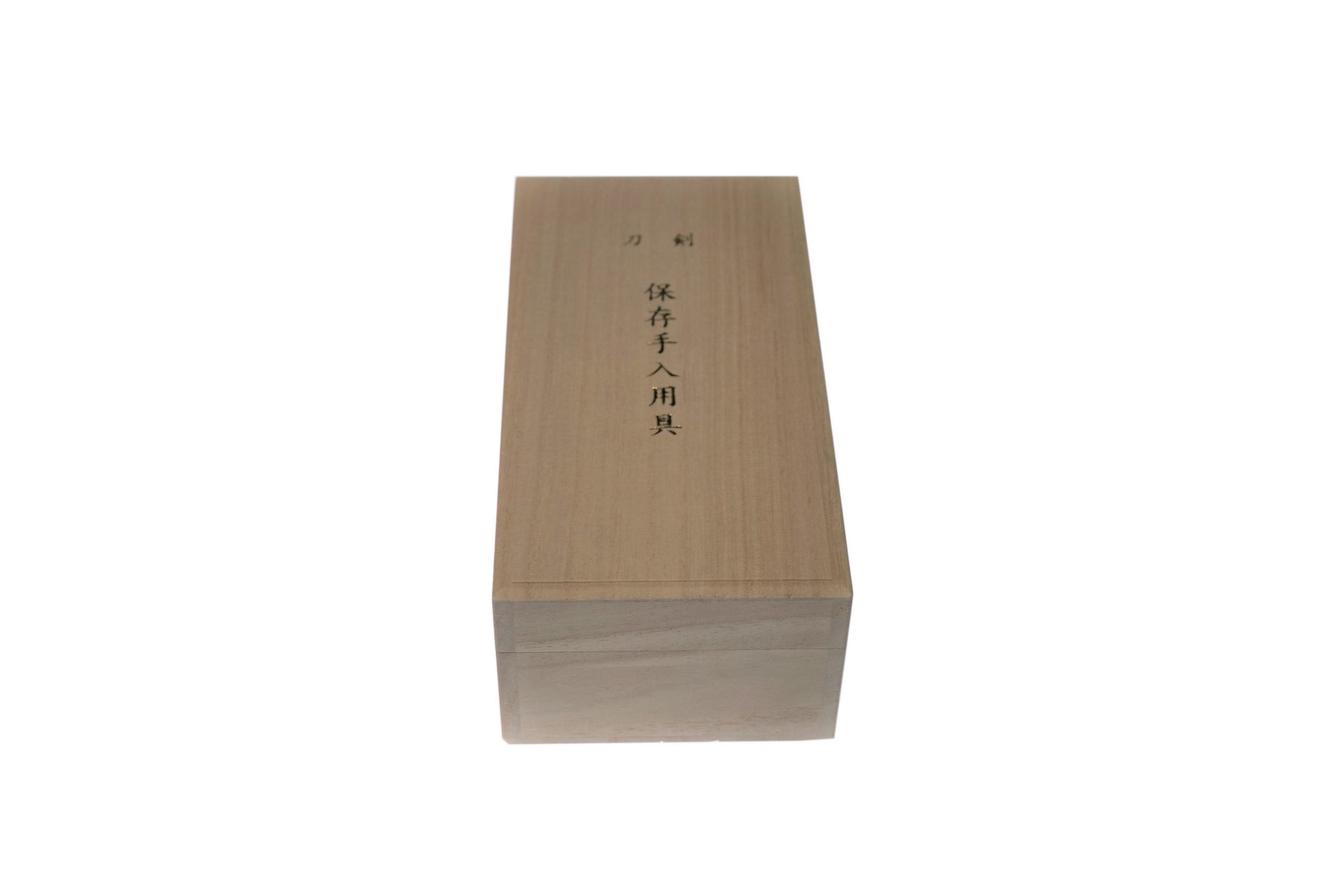
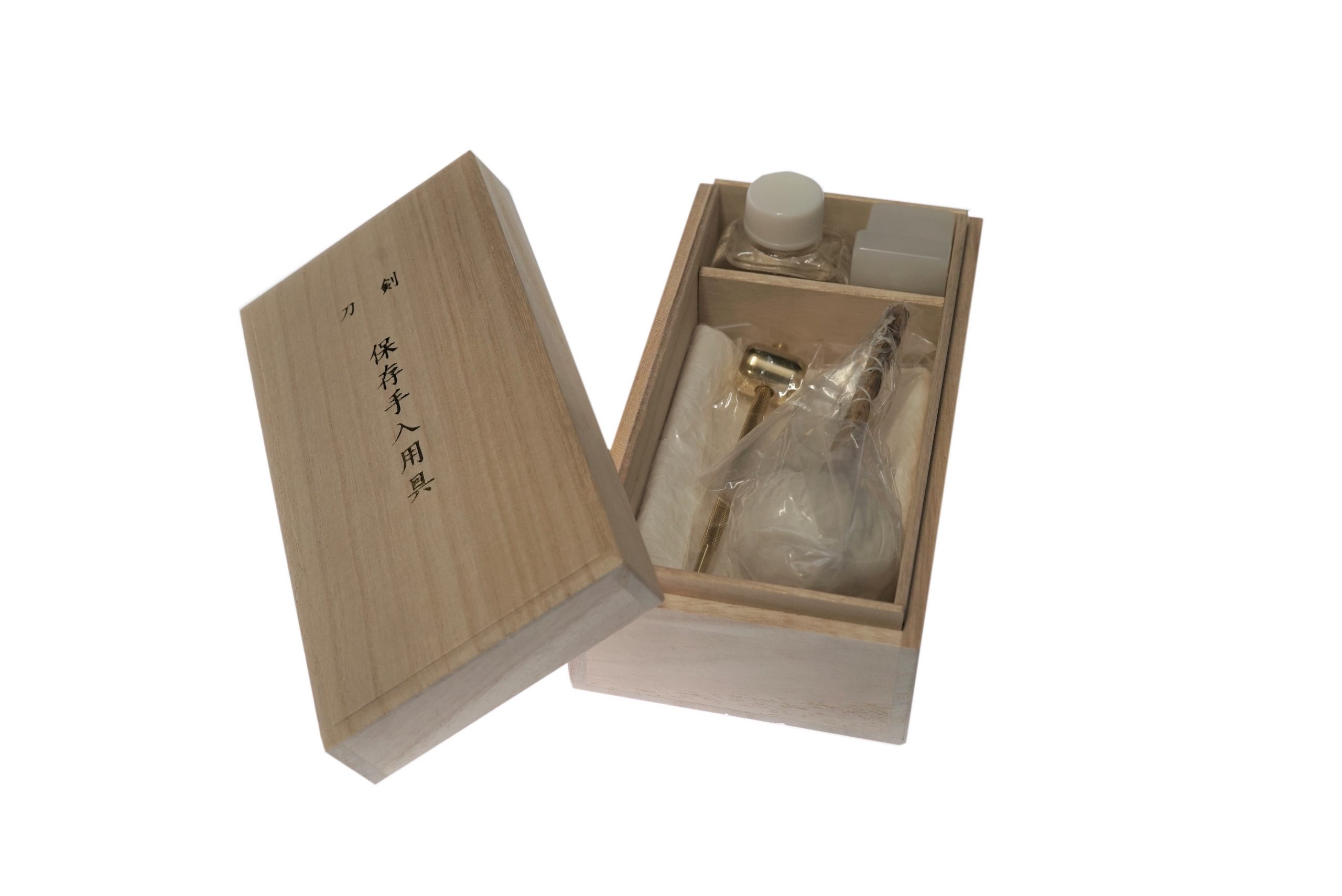
MORE ANTIQUE JAPANESE SWORD FOR SALE
SWORDS WITHOUT CERTIFICATES FOR SALE
LEARN JAPANESE SWORD TERMINOLOGY
Thank you for reading all the information on the page. If you have any difficulty choosing the right Japanese sword for you, we will be more than happy to help you find the one that speaks to you the most. Please feel free to contact us.
